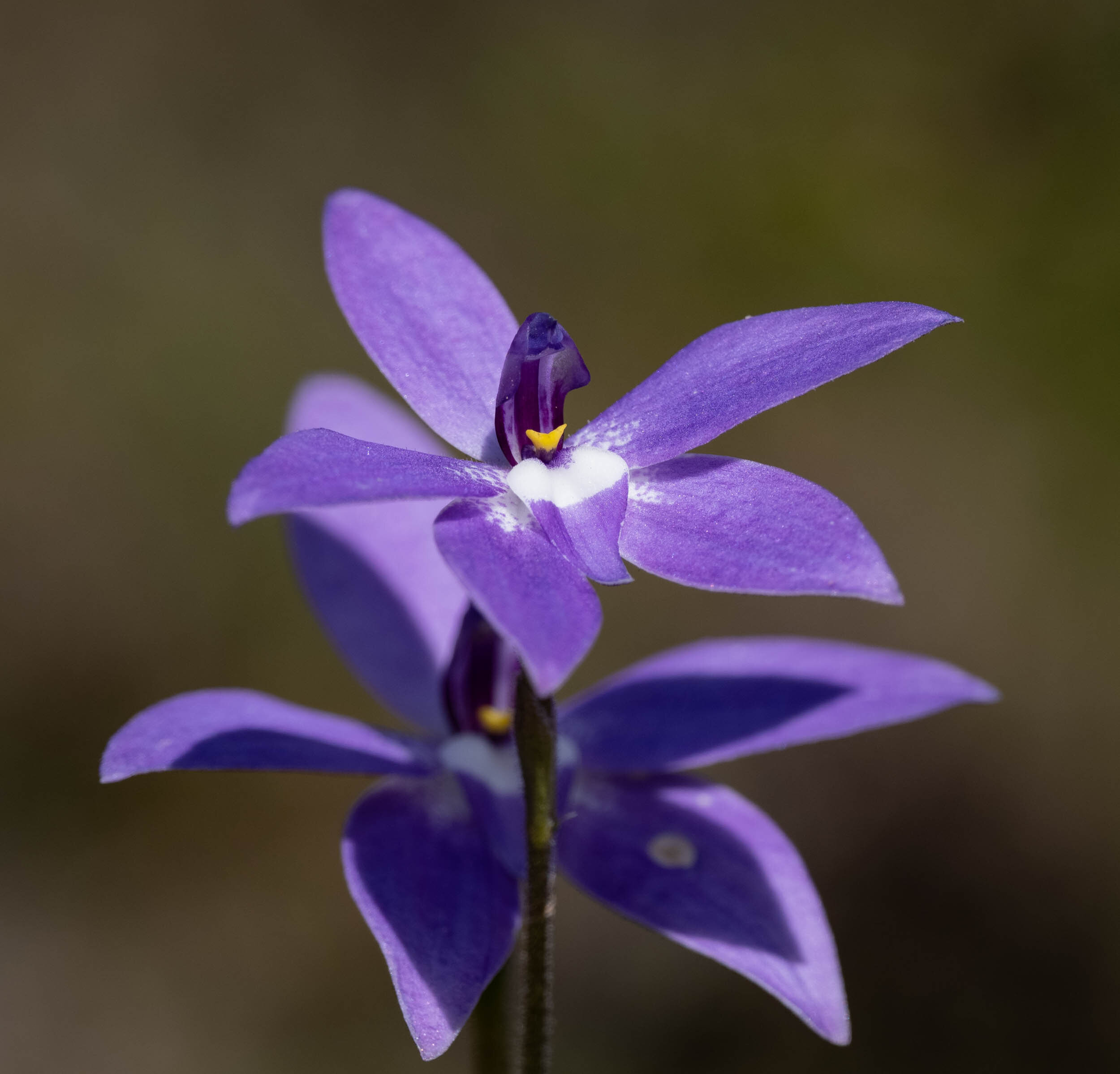
Waxlip Orchid
Glossodia major …. in huge numbers

Small Waxlip Orchid
Glossodia minorata … hundreds of these, too.
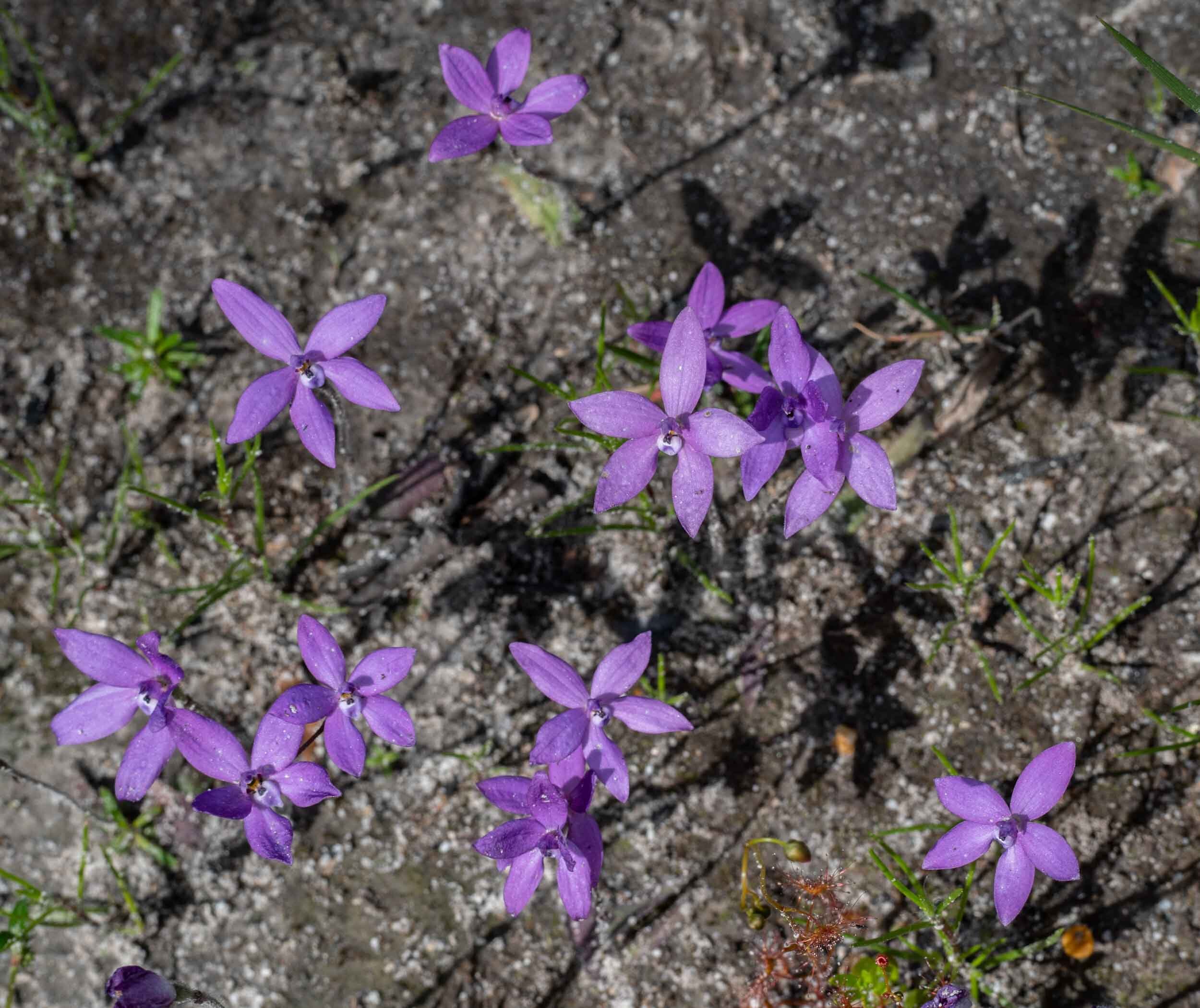
Glossodia, en masse

Pink Sun-orchid
Thelymitra carnea … many open, many yet to open.
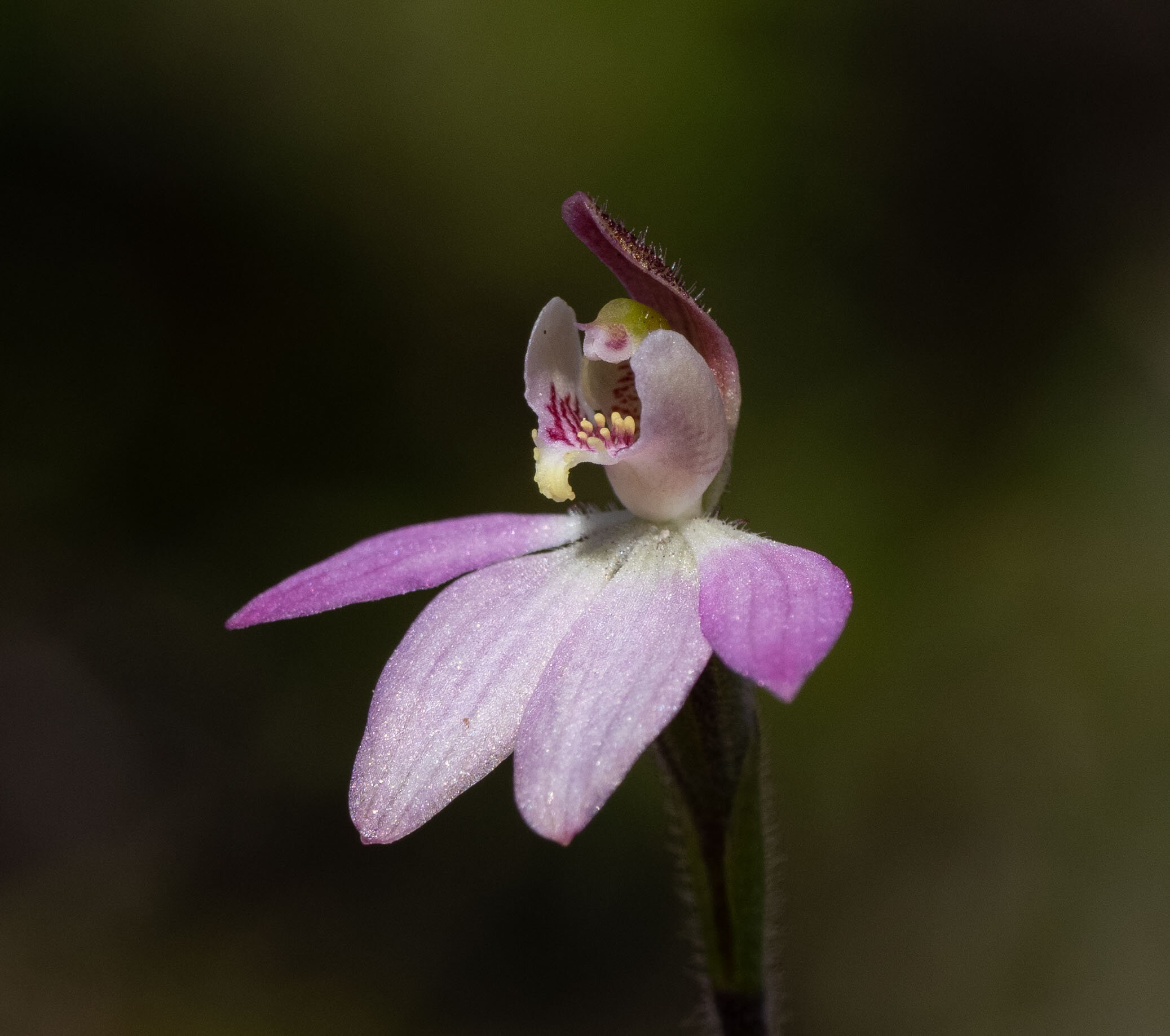
Tiny Caladenia species
Caladenia mentiens
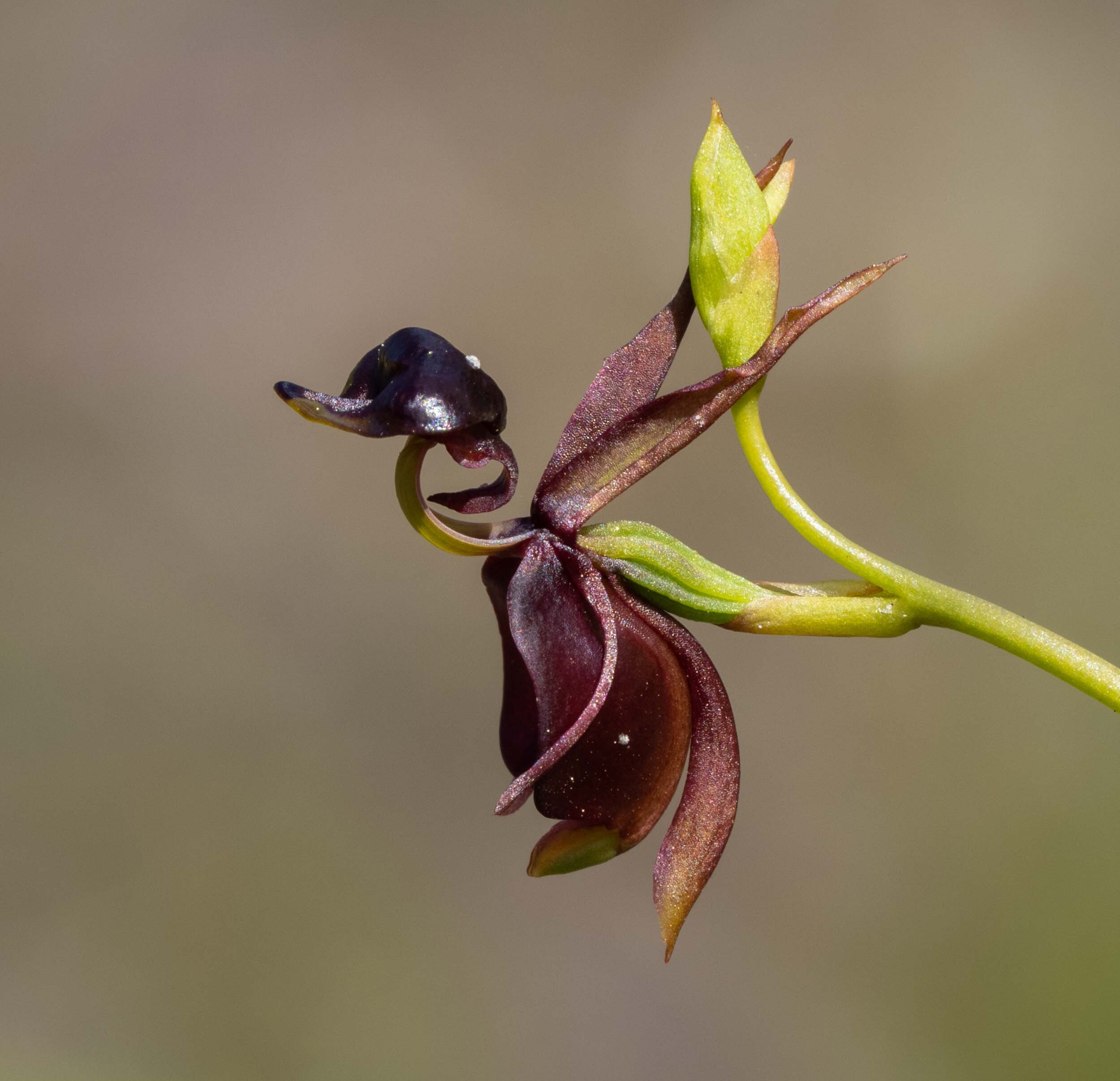
Large Flying Duck Orchid
Caleana major …. again, more of these than we’ve seen in a long while.
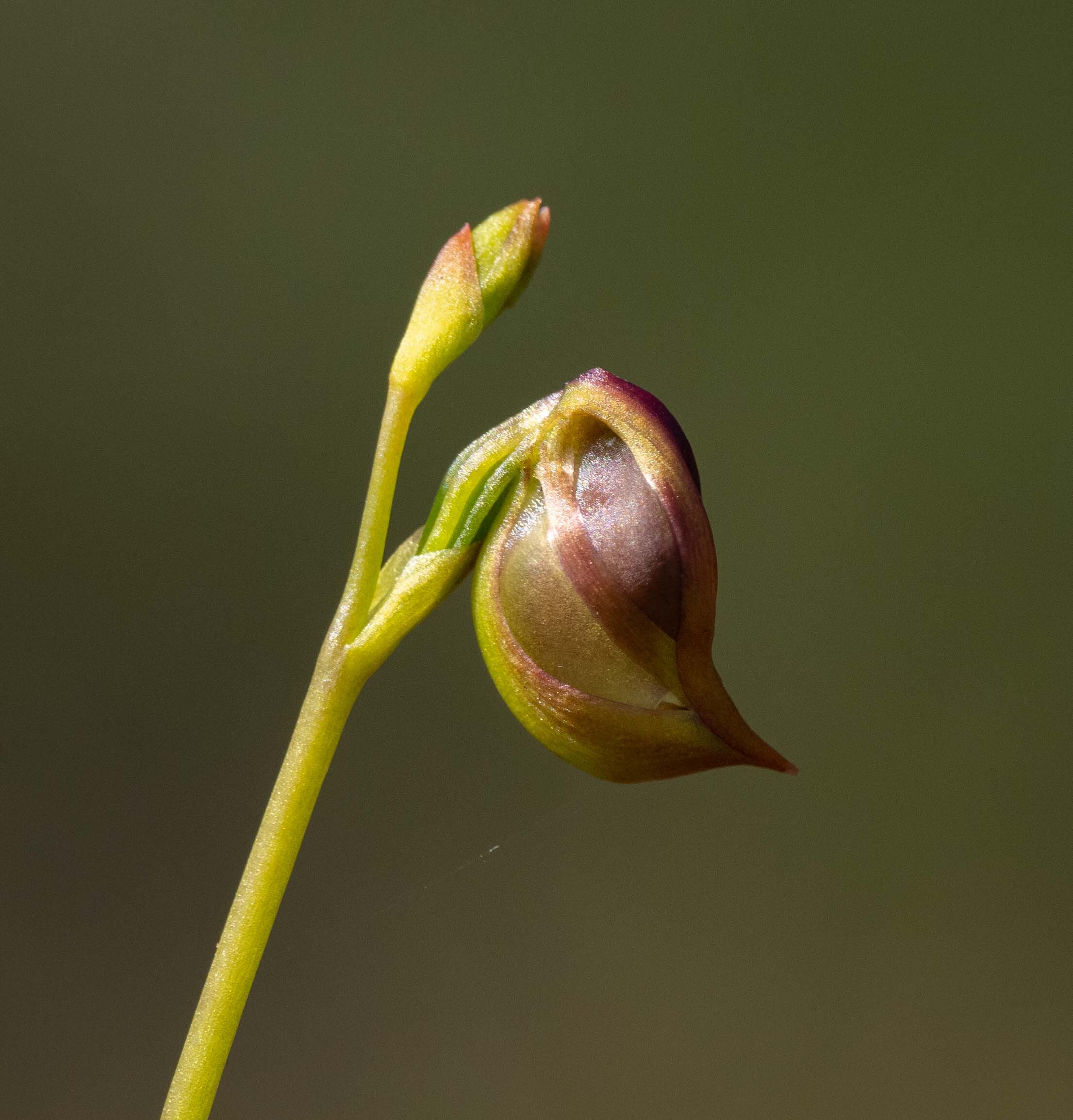
Large Flying Duck Orchid
Caleana major …. not yet opened
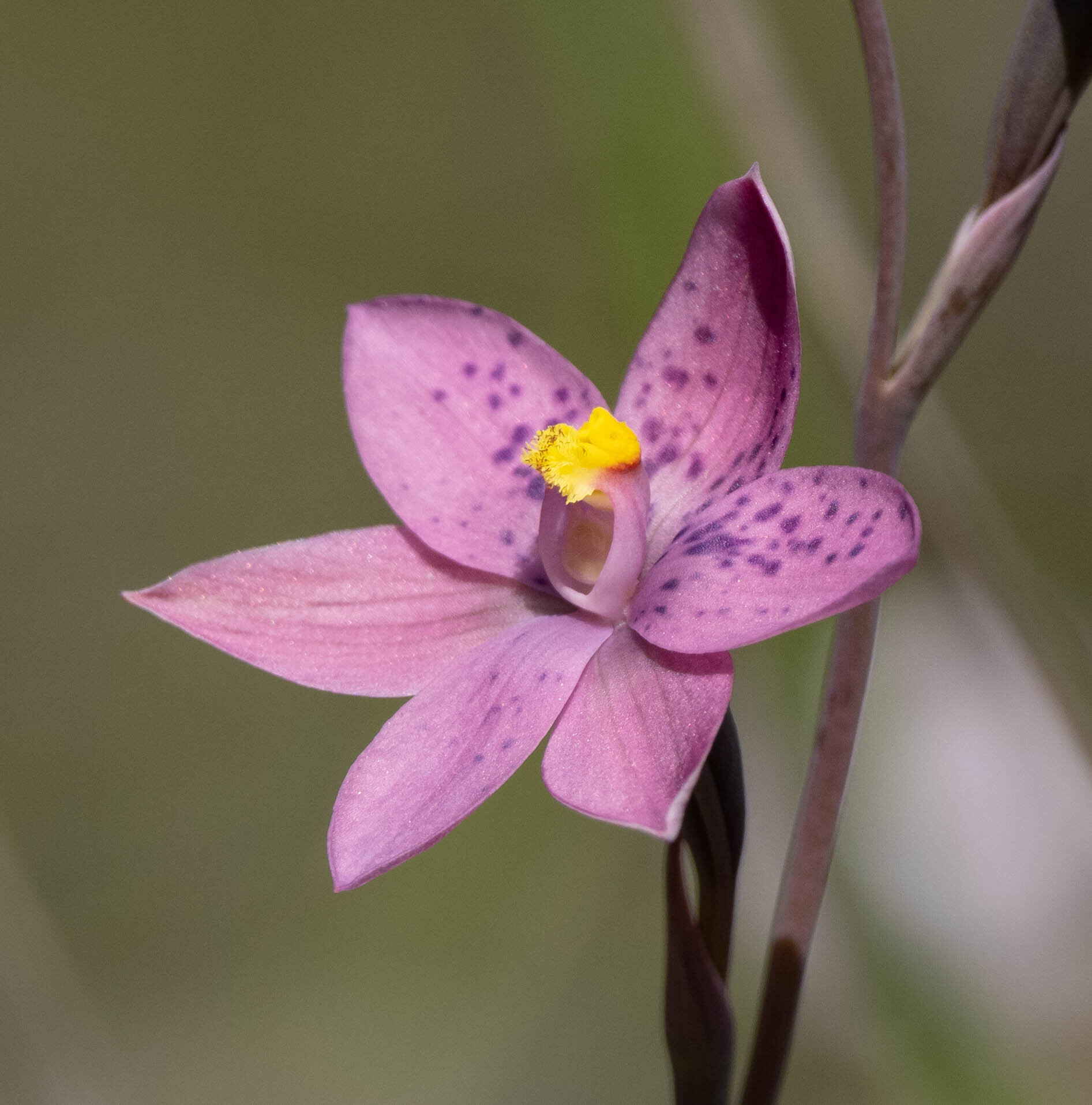
Spotted Sun-Orchid
Thelymitra x irregularis … this is a naturally-occurring hybrid between T. ixiodes and T. carnea
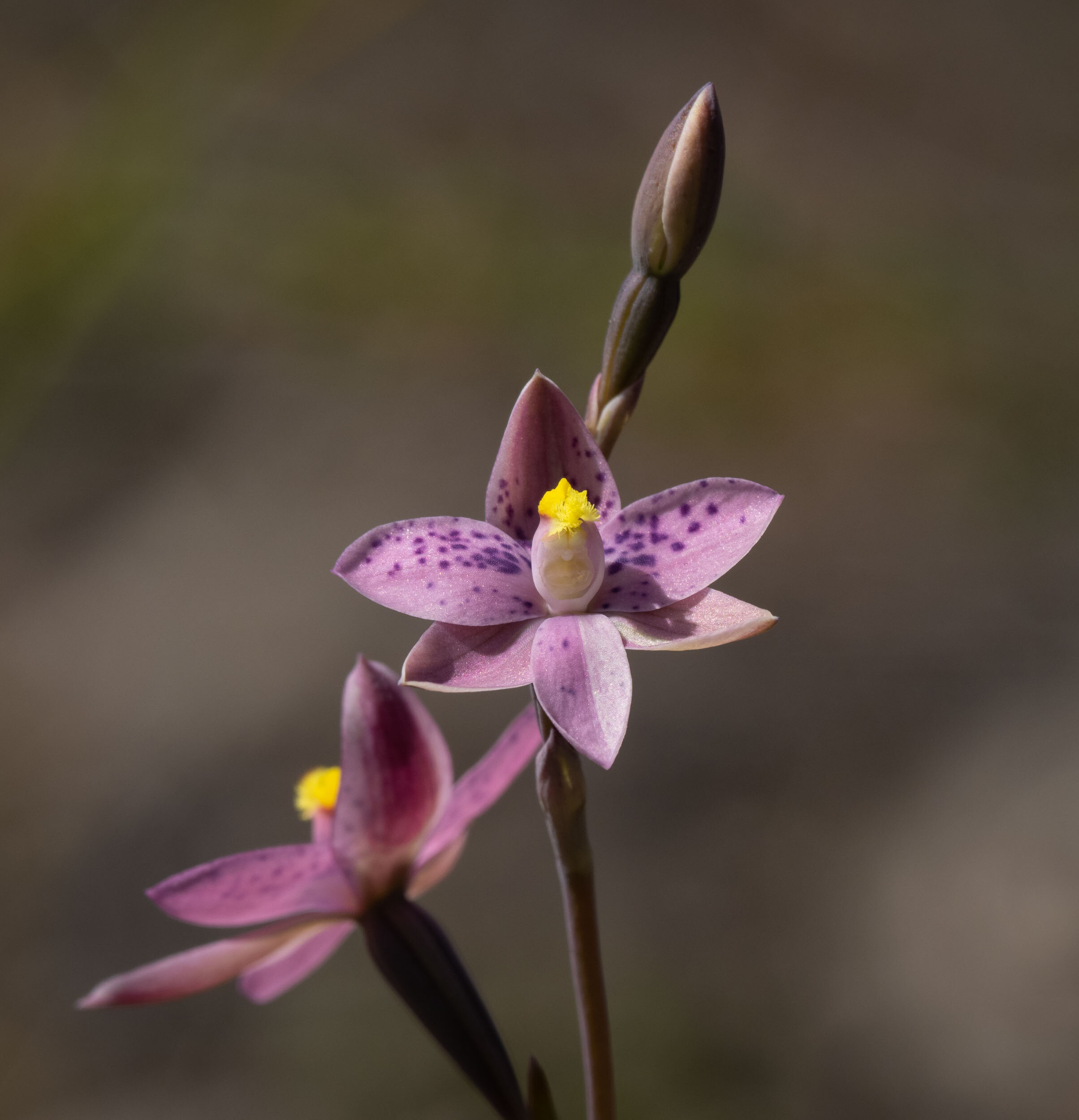
Spotted Sun-Orchid
Thelymitra x irregularis … this is a naturally-occurring hybrid between T. ixiodes and T. carnea
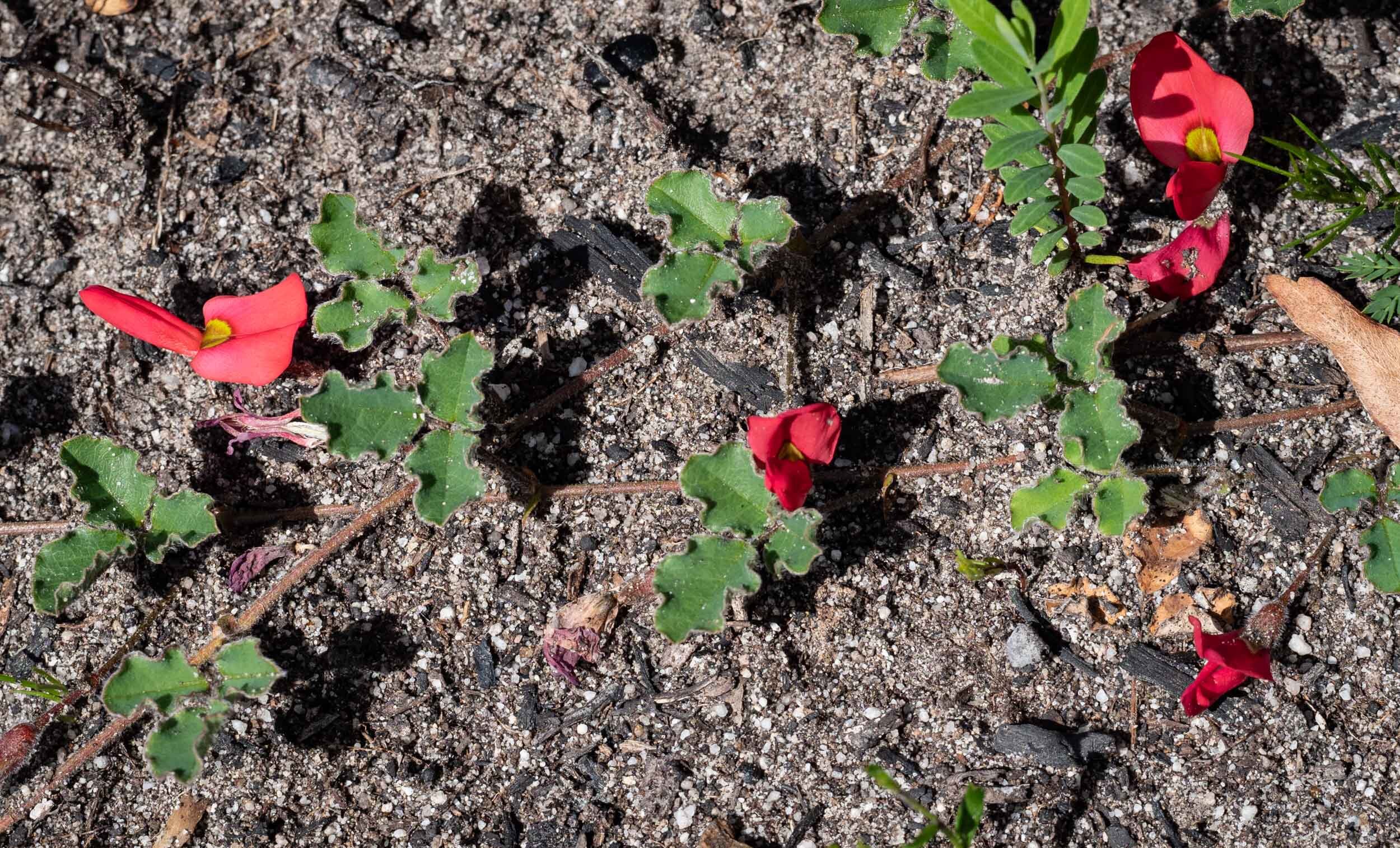
Running Postman
Kennedia prostrata
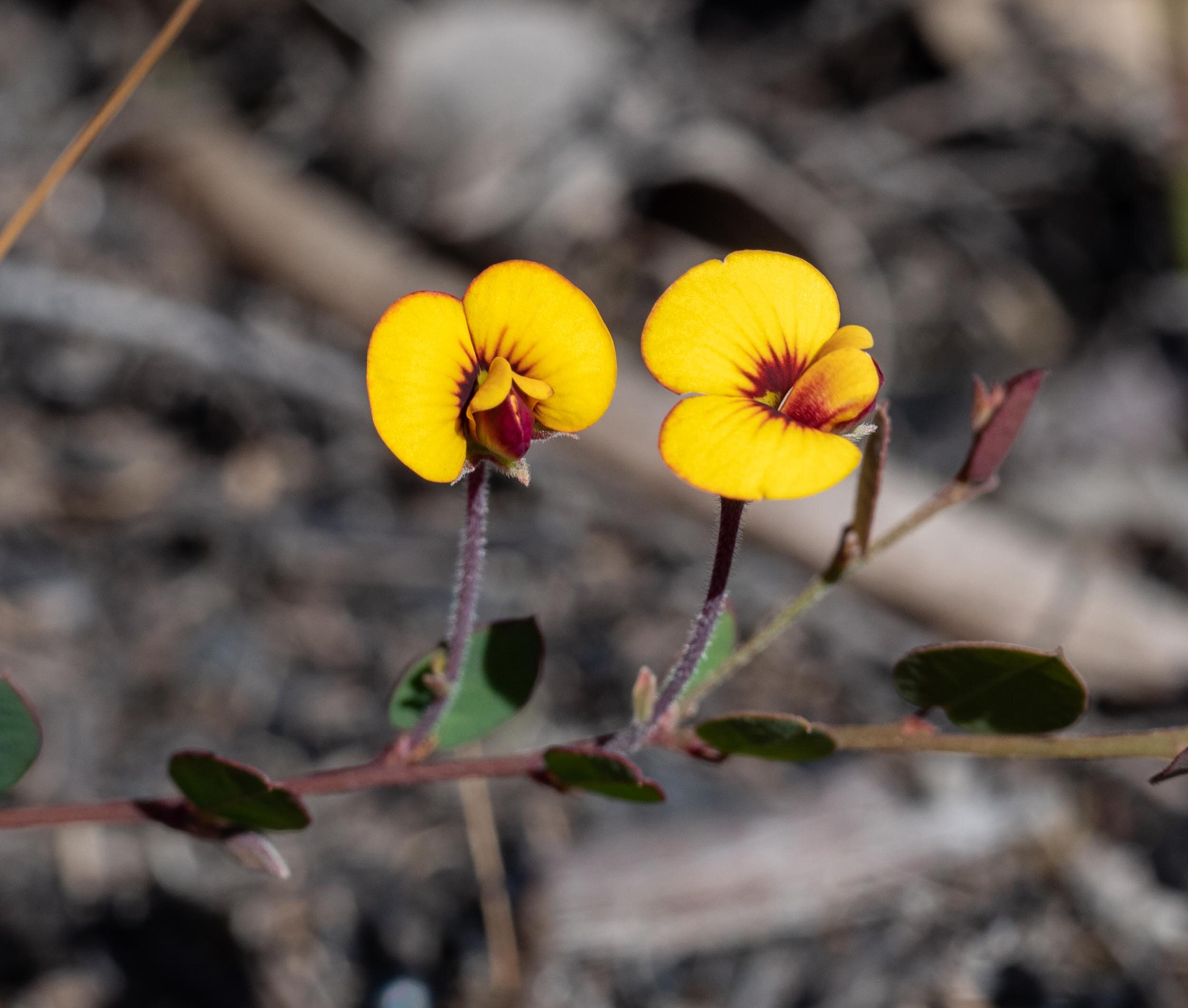
Creeping Bossiaea
Bossiaea prostrata

Sword Bossiaea
Bossiaea ensata
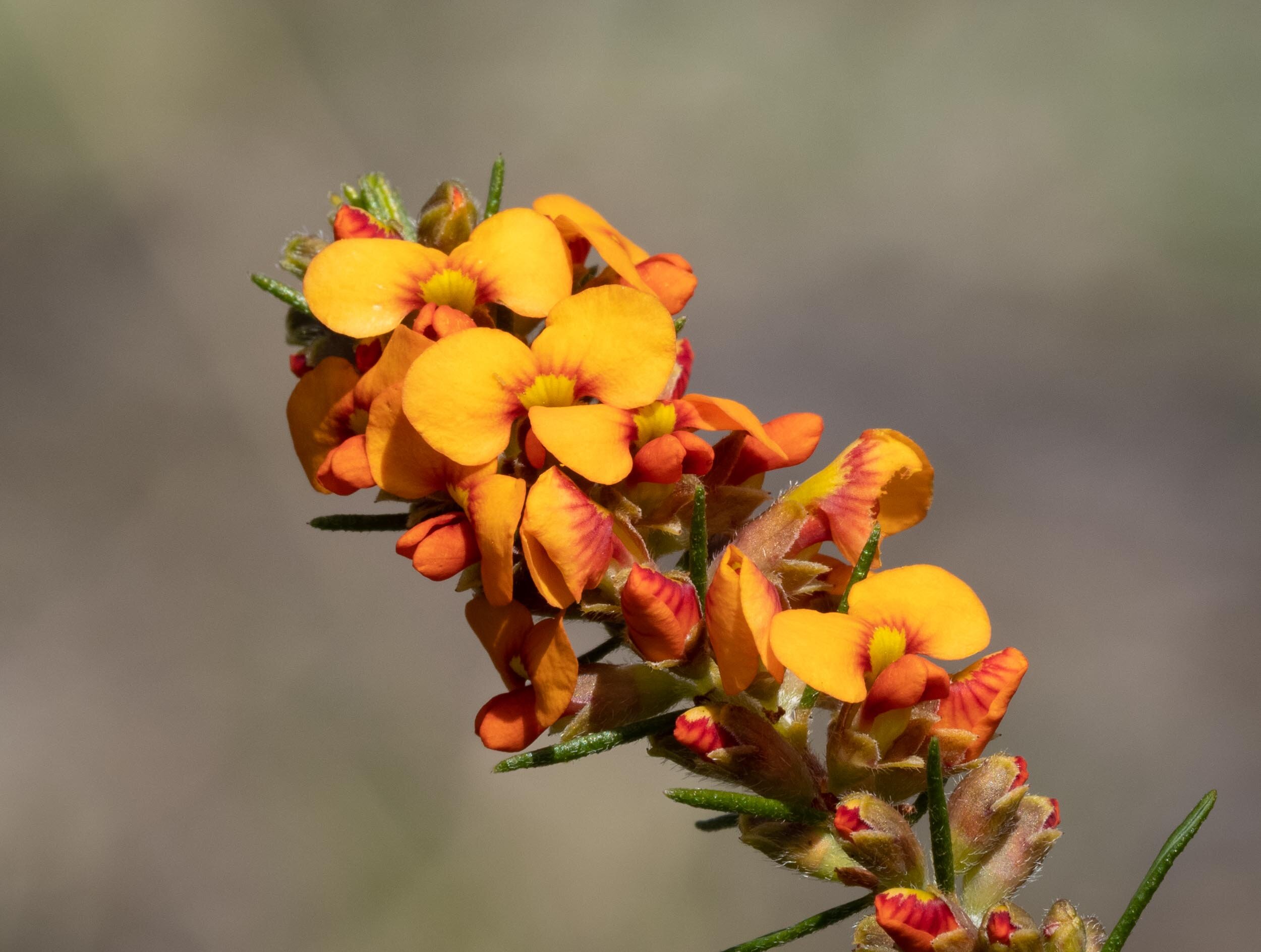
Dillwynia rudis
Dillwynia rudis
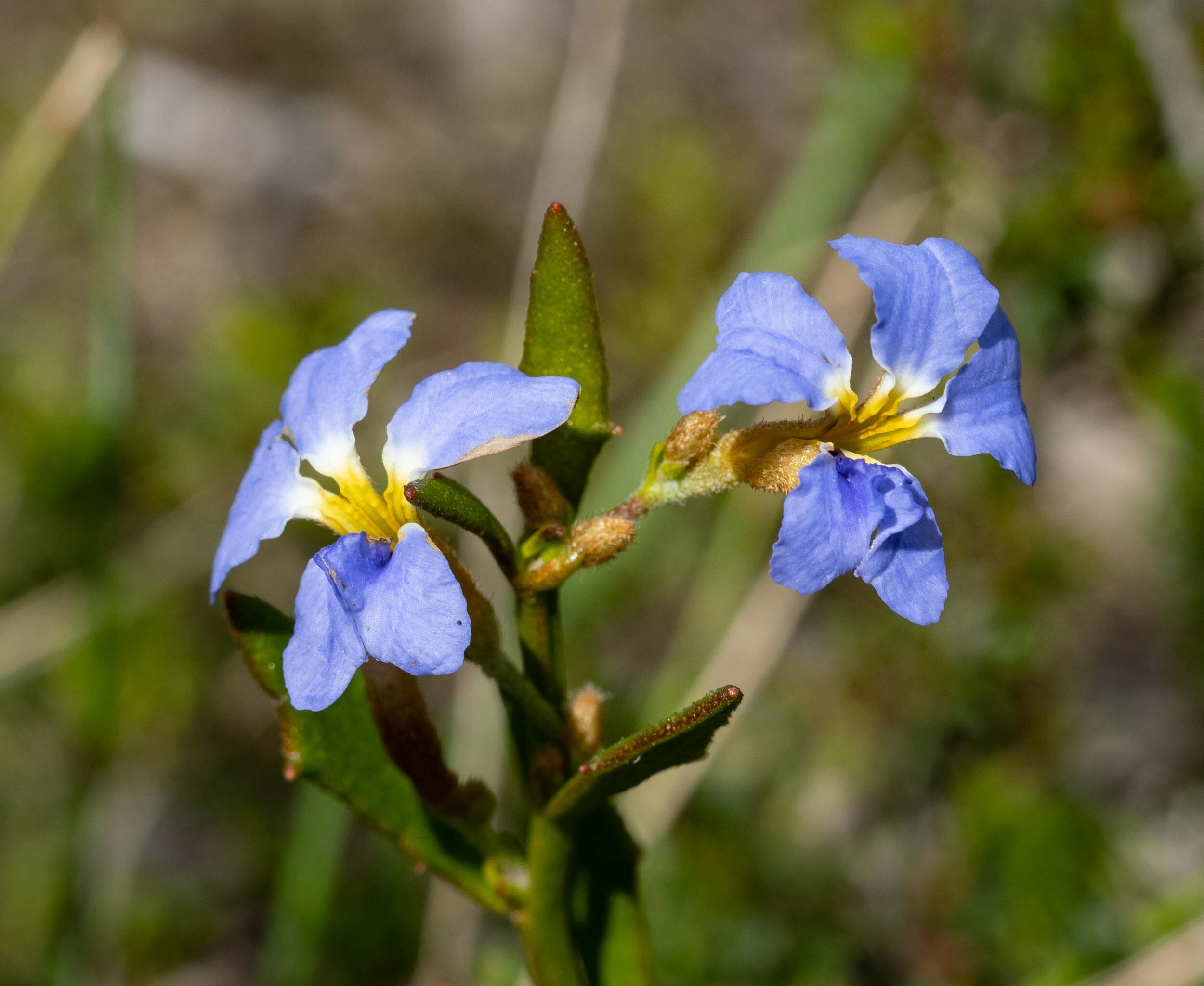
Blue Dampiera
Dampiera stricta
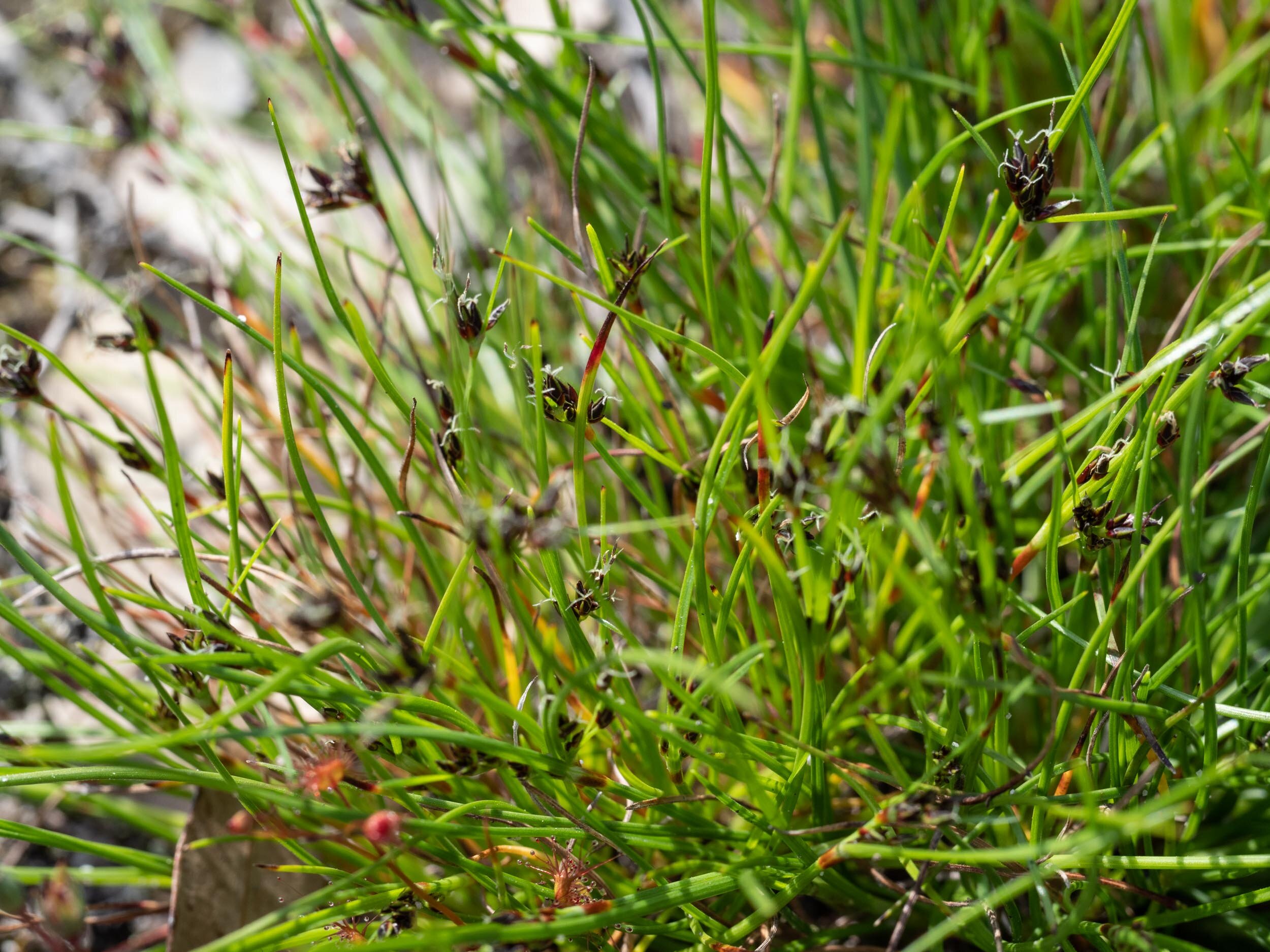
Common Bog-rush
Schoenus apogon
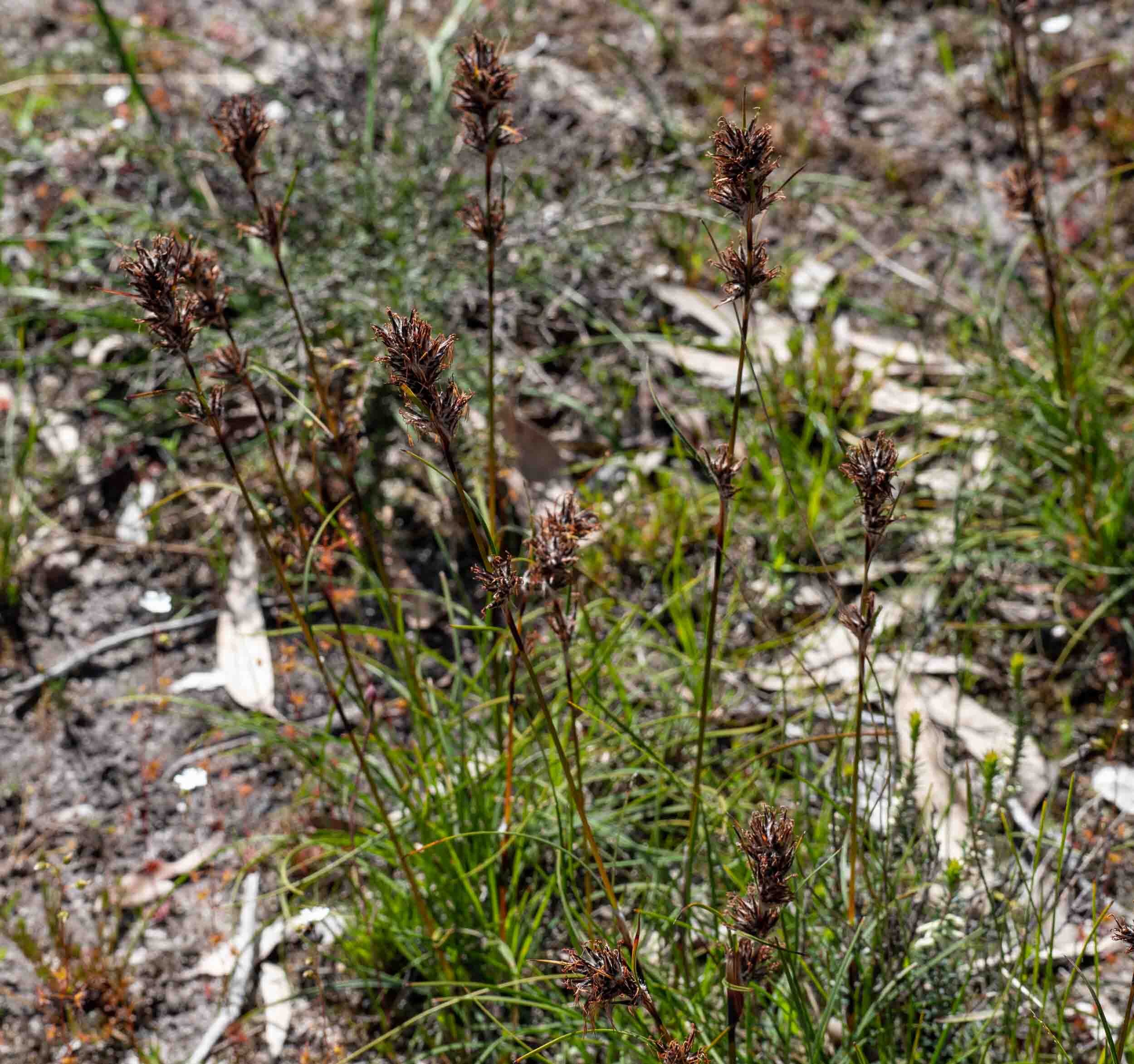
Hairy Bog-rush
Schoenus villosus

Pale Sundew
Drosera peltata … flowering alongside the taller, pink-flowered Drosera auriculata
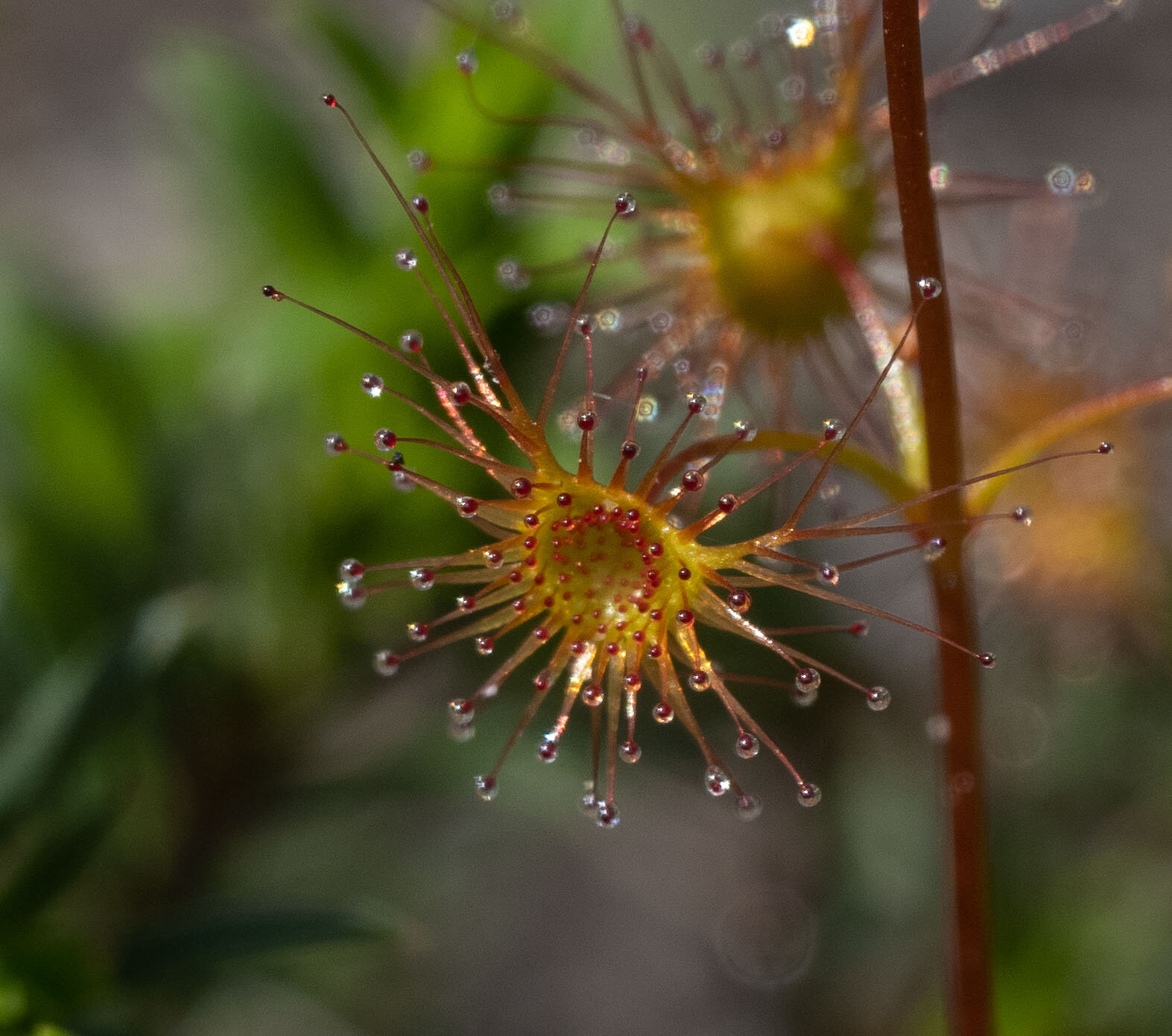
Pale Sundew leaves
Drosera peltata
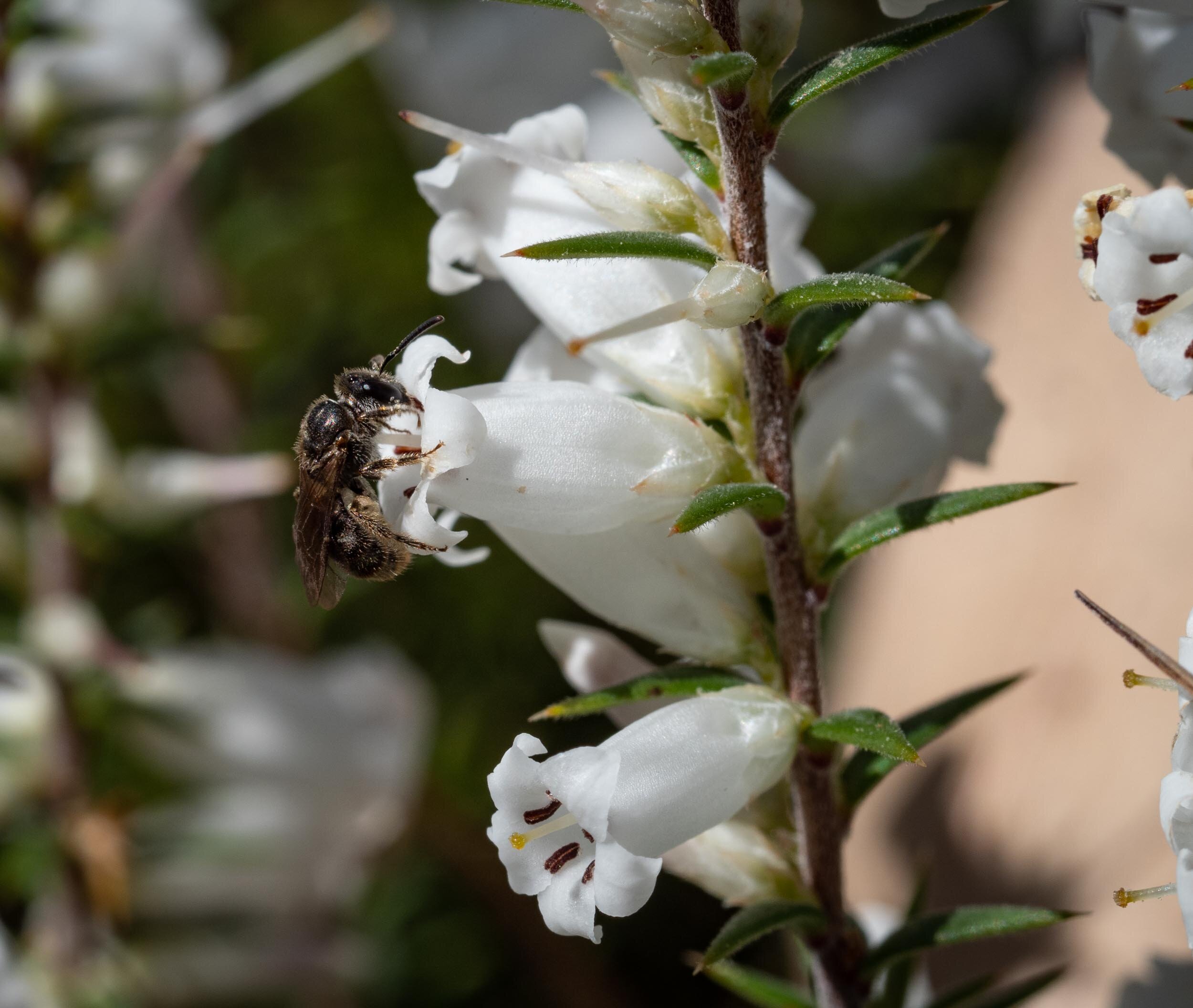
Coast Coral Heath
Epacris microphylla var. microphylla

Hoverfly on Tall Sundew
Hoverflies are known pollinators for these plants.
Hoverfly: Melangyna sp. Sundew: Drosera auriculata
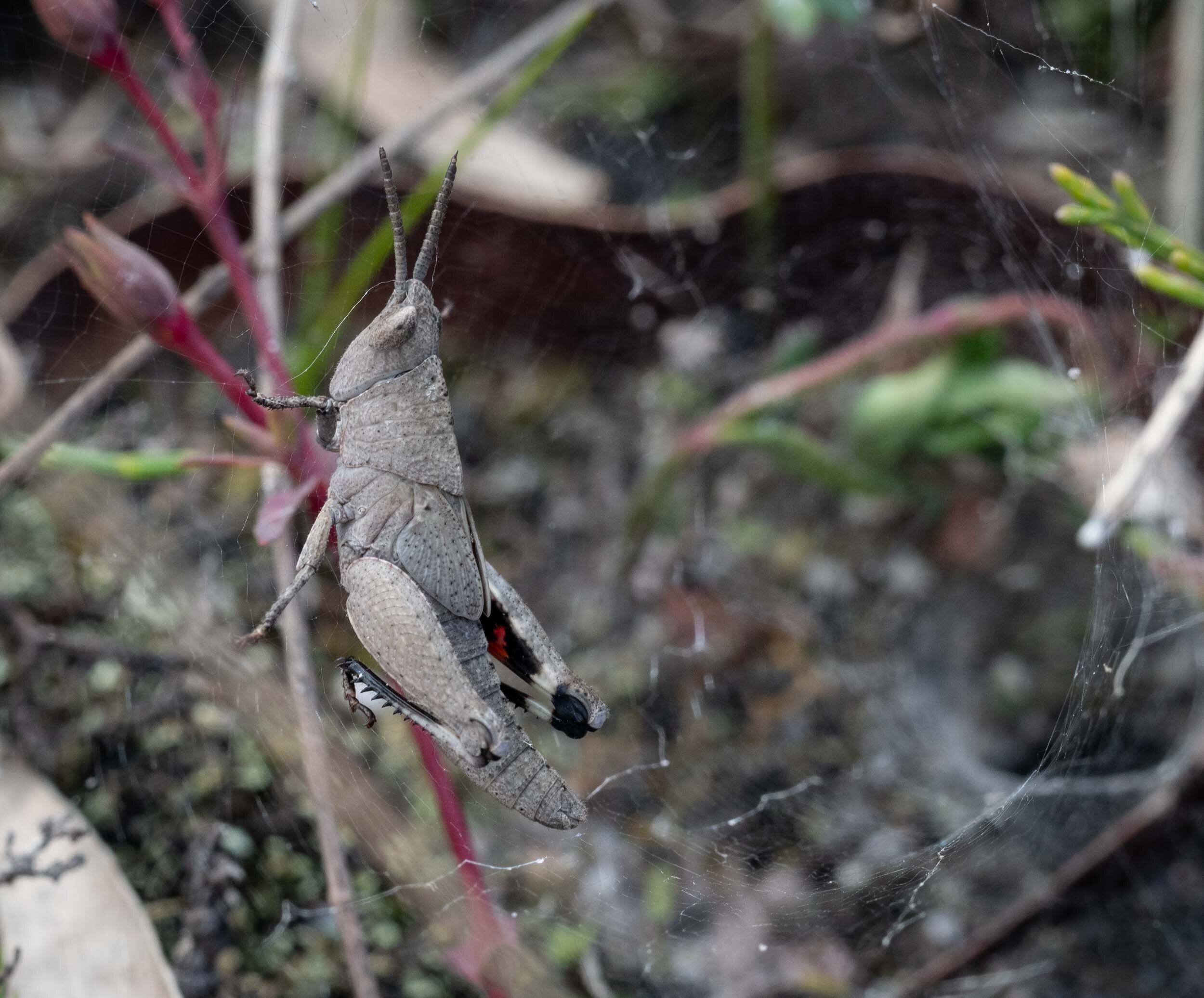
Mimetic Gumleaf Grasshopper
Goniaea opomaloides nymph. This is one of several grasshopper species on the helipad - excellent prey for predators such as wolf spiders and skinks.

Common Gumleaf Grasshopper
Goniaea australasiae

Variable Cirphula
Cirphula pyrrhocnemis
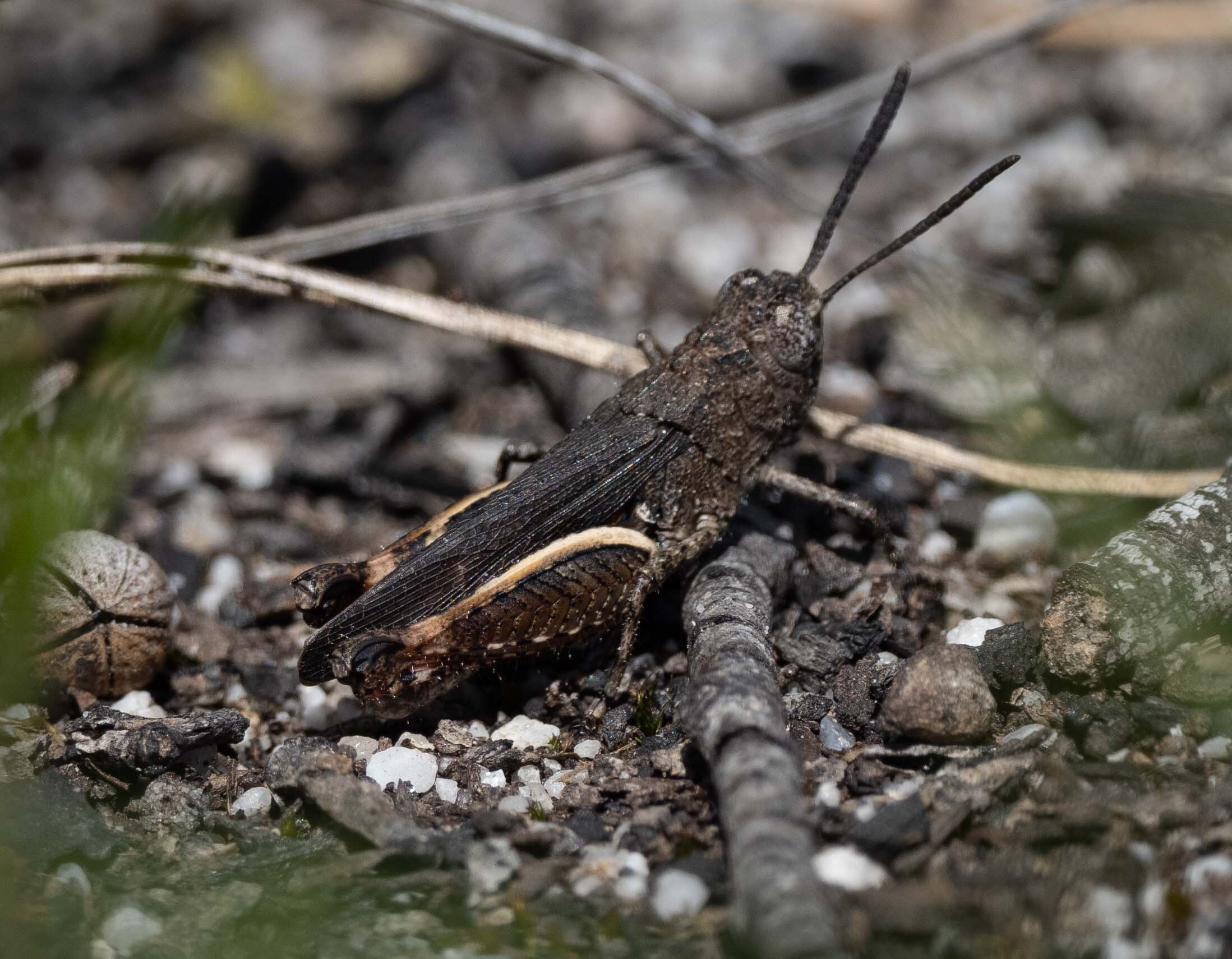
Variable Cirphula
Cirphula pyrrhocnemis
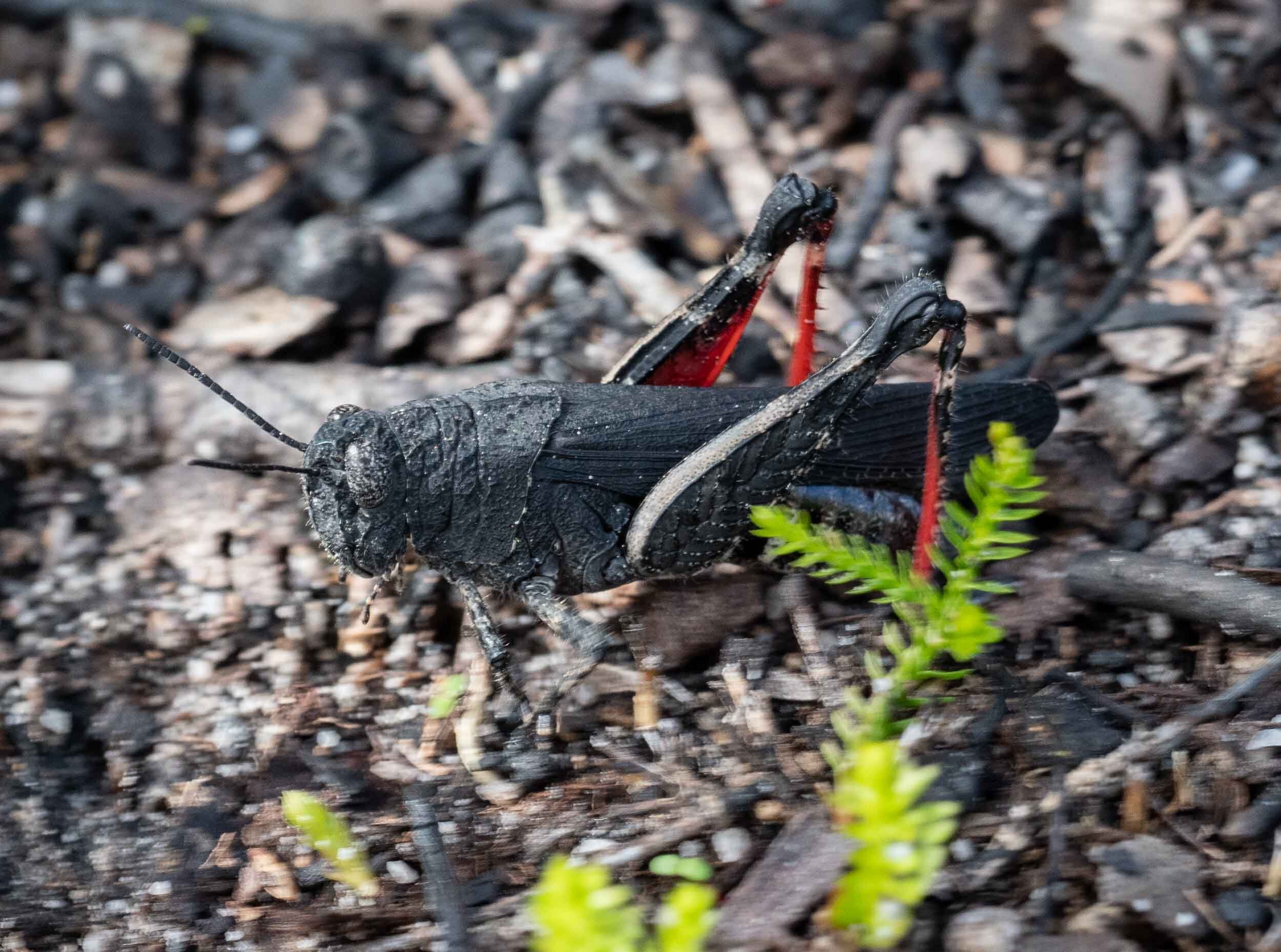
Variable Cirphula
Cirphula pyrrhocnemis
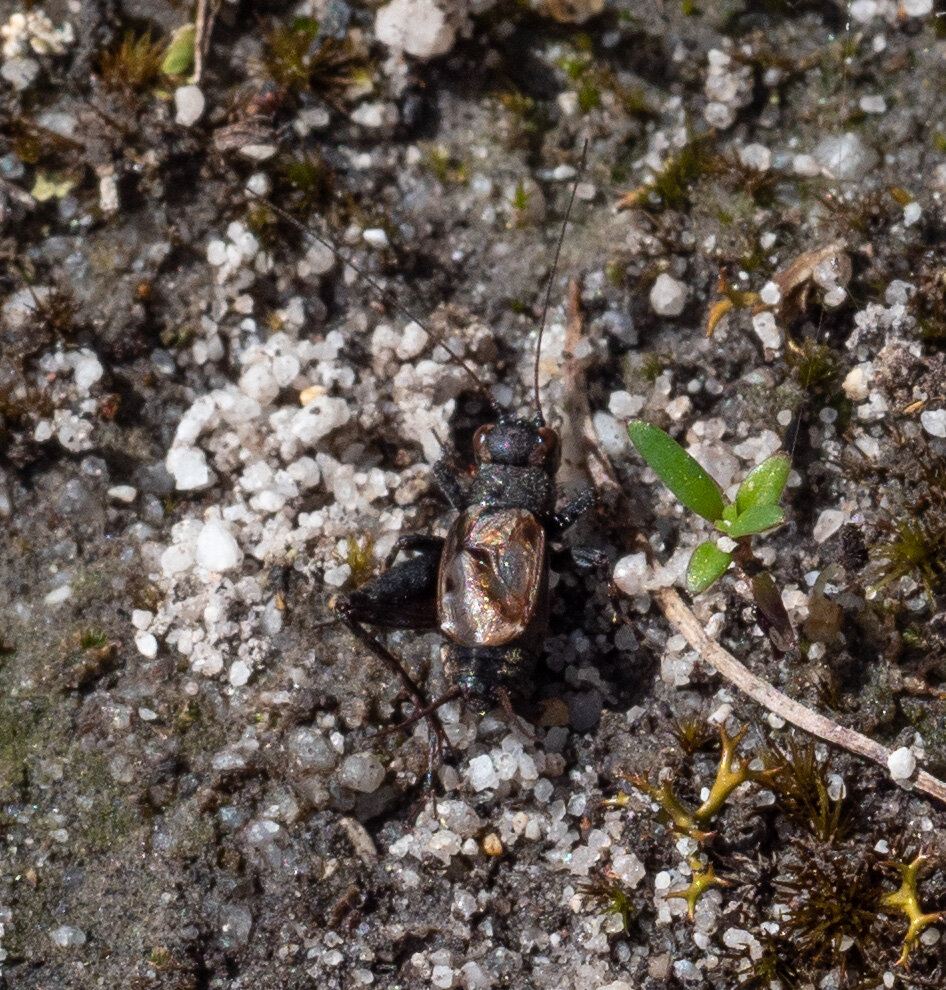
Pygmy Cricket
Bobilla sp. - a male

Pygmy Cricket
Bobilla sp. - a female, with a long ovipositor. These tiny crickets can leap vast distances (relatively speaking) to escape predators.
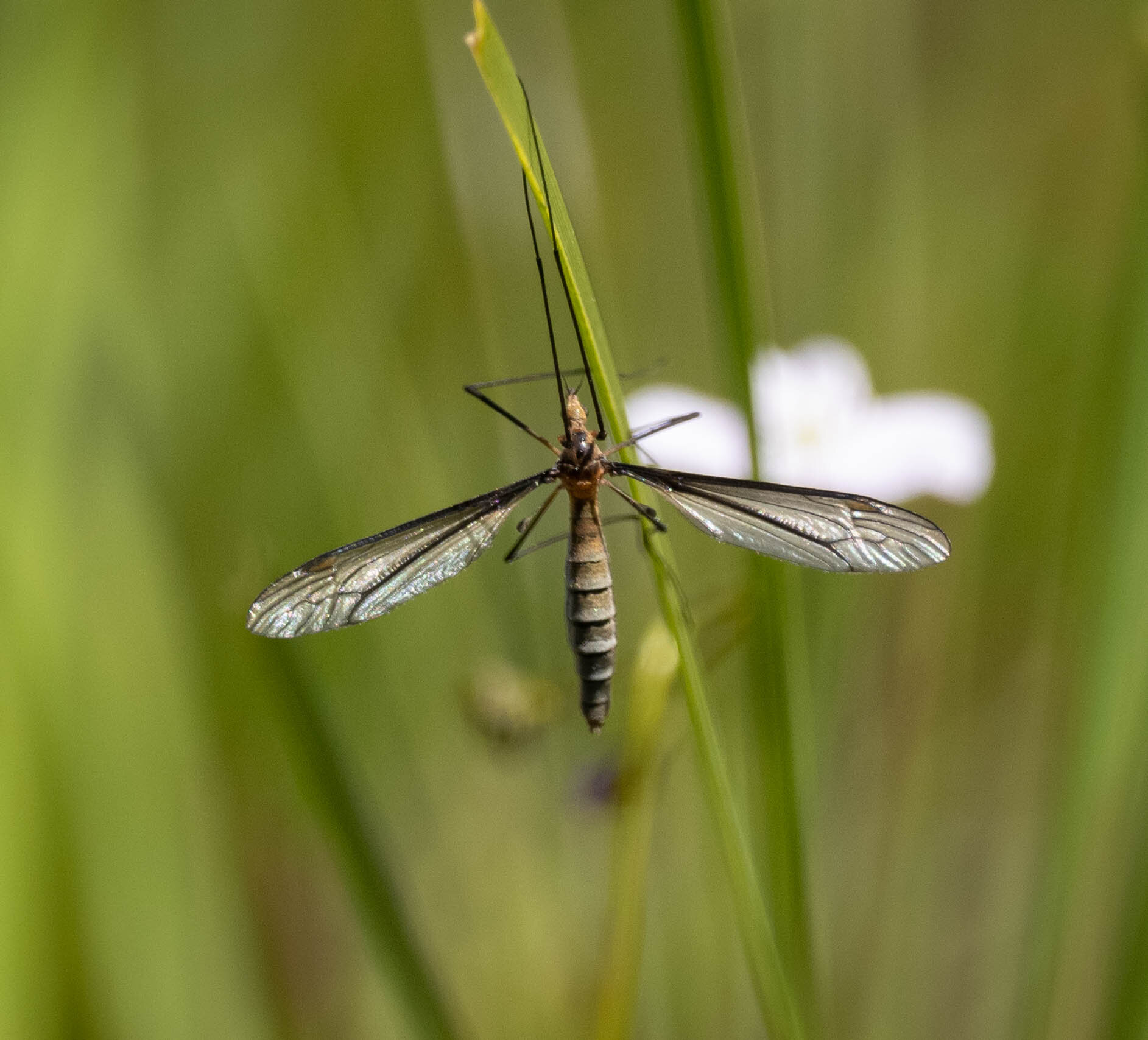
Crane Fly
Family Tipulidae … perhaps Leptotarsus sp.
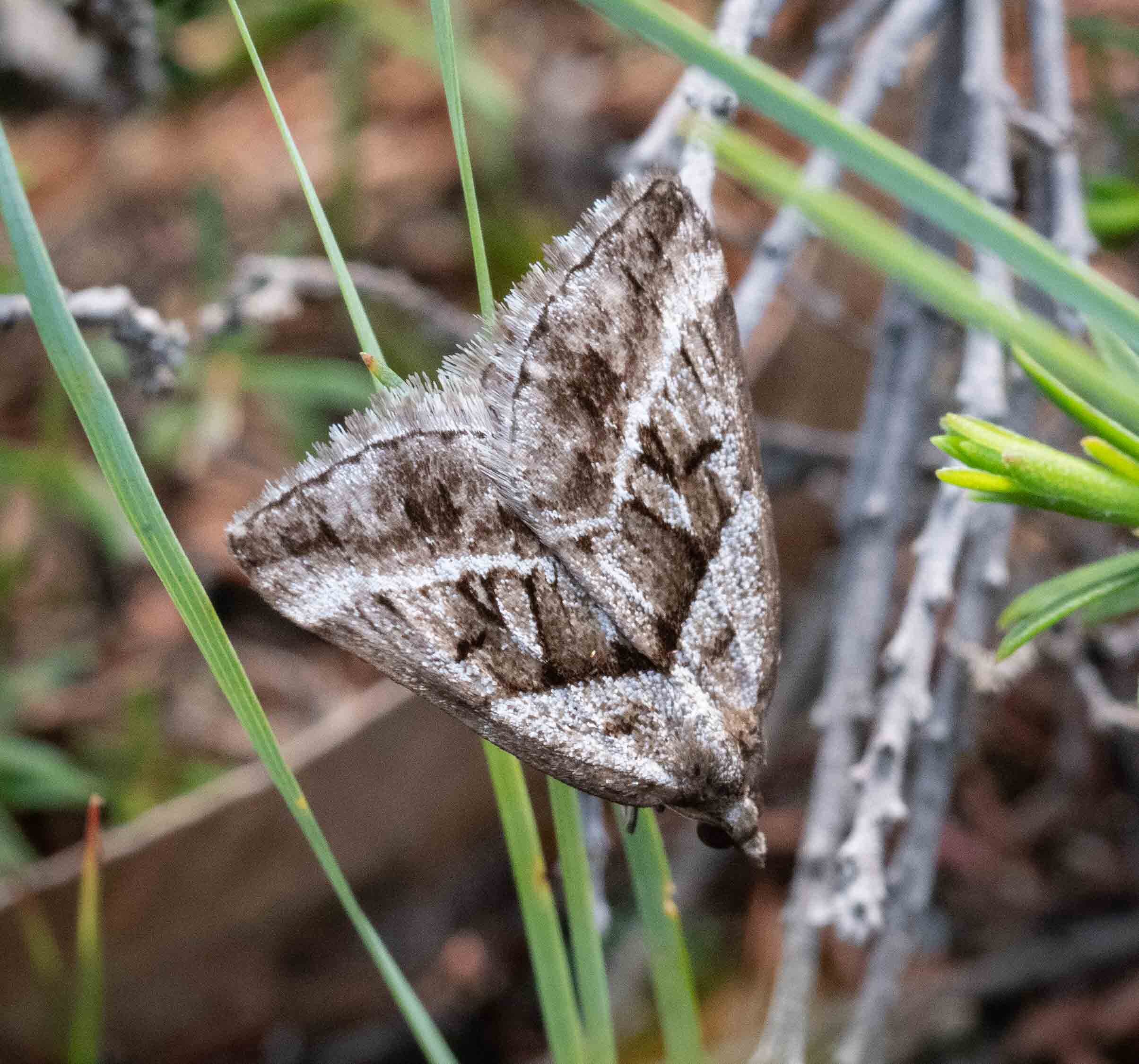
White-barred Heath Moth
Dichromodes stilbiata. We’ve seen three species of this genus at the helipad, each with distinctive wing patterning.
Family: Geometridae

Yellow-banded Day-moth
Eutrichopidia latinus in the typical head-down pose. The caterpillars have been recorded on Gonocarpus (Raspwort) … a plant growing nearby.
Family: Noctuidae
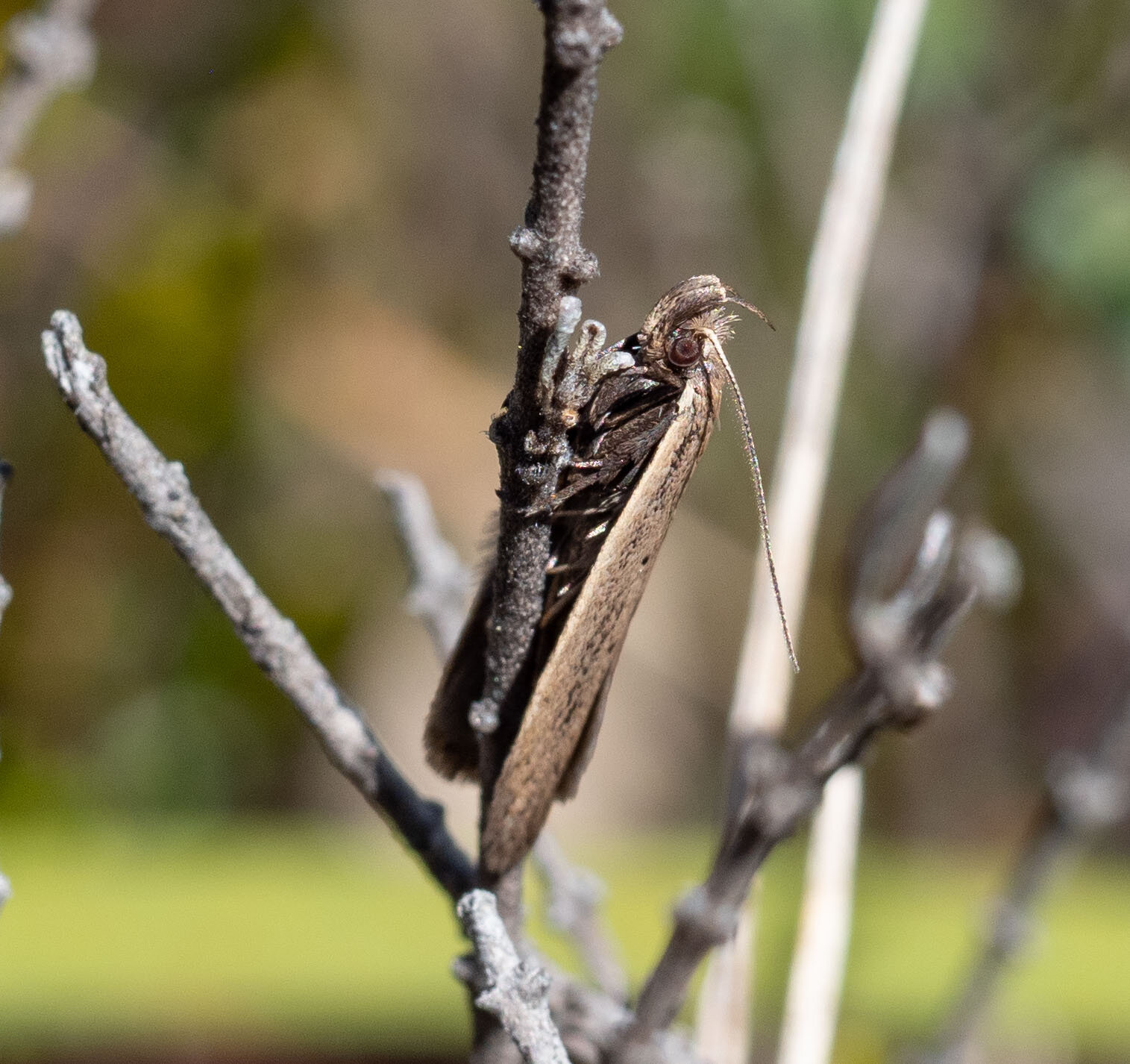
Concealer moth
Philobota sp. There were dozens of these small concealer moths flying rapidly from one bush to another on the day we visited the helipad.

Wolf Spider
Family: Lycosidae - probably Tasmanicosa godeffroyi, the Garden Wolf Spider. We saw a host of these spiders roaming the helipad in search of prey - insects and other spiders.

Wolf Spider
Family: Lycosidae
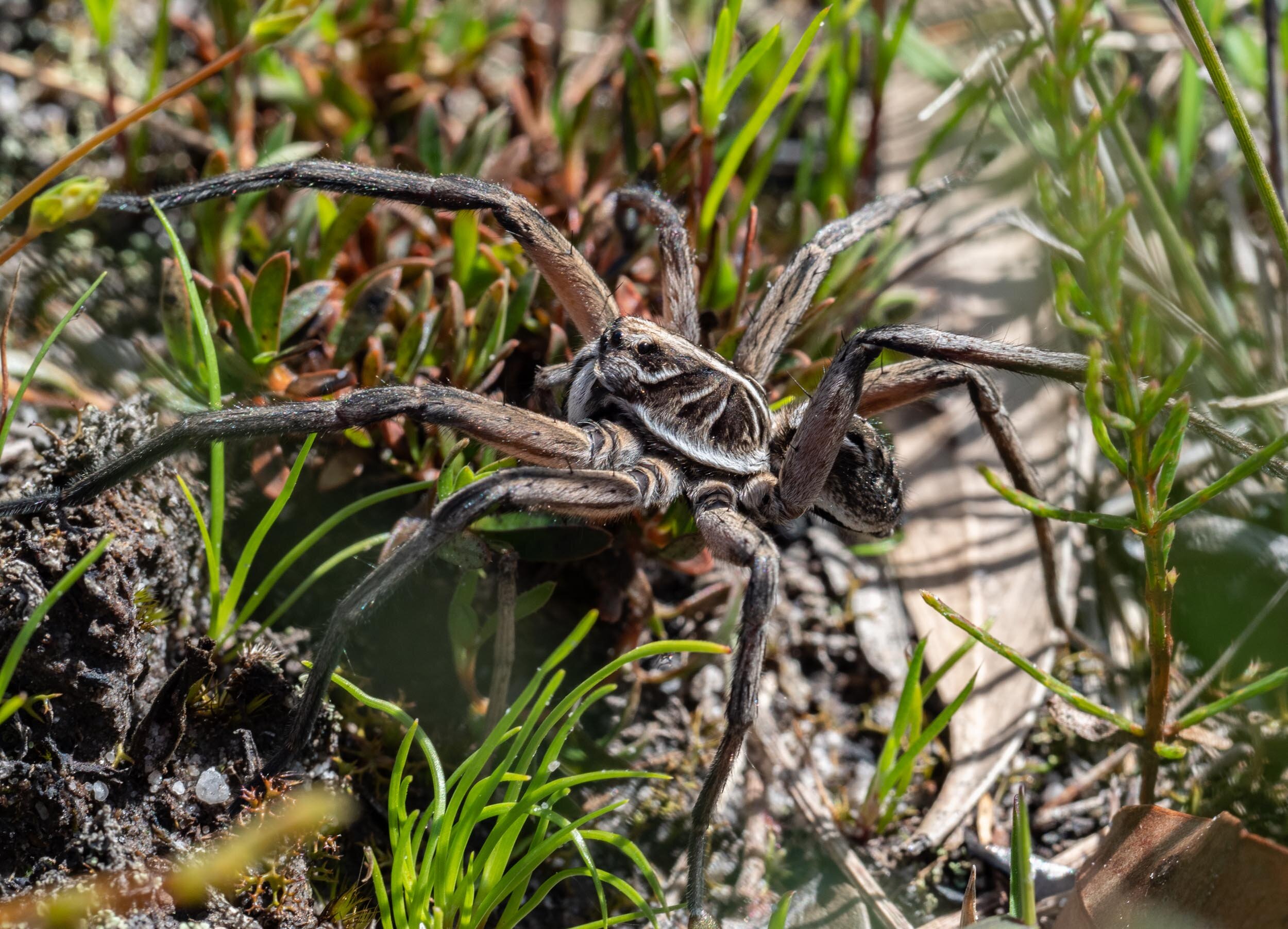
Wolf Spider
Family: Lycosidae
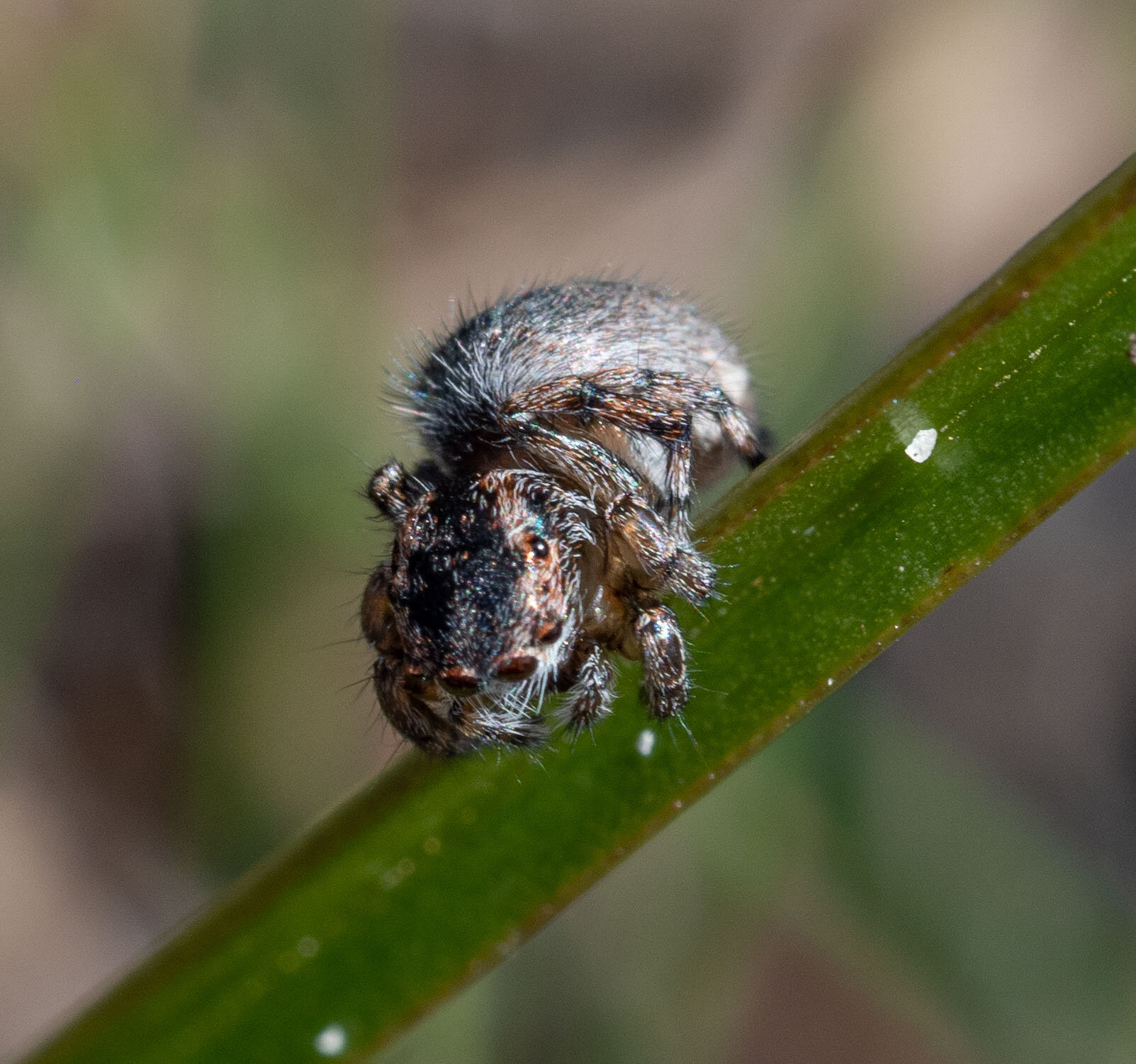
Jumping Spider
Family: Salticidae
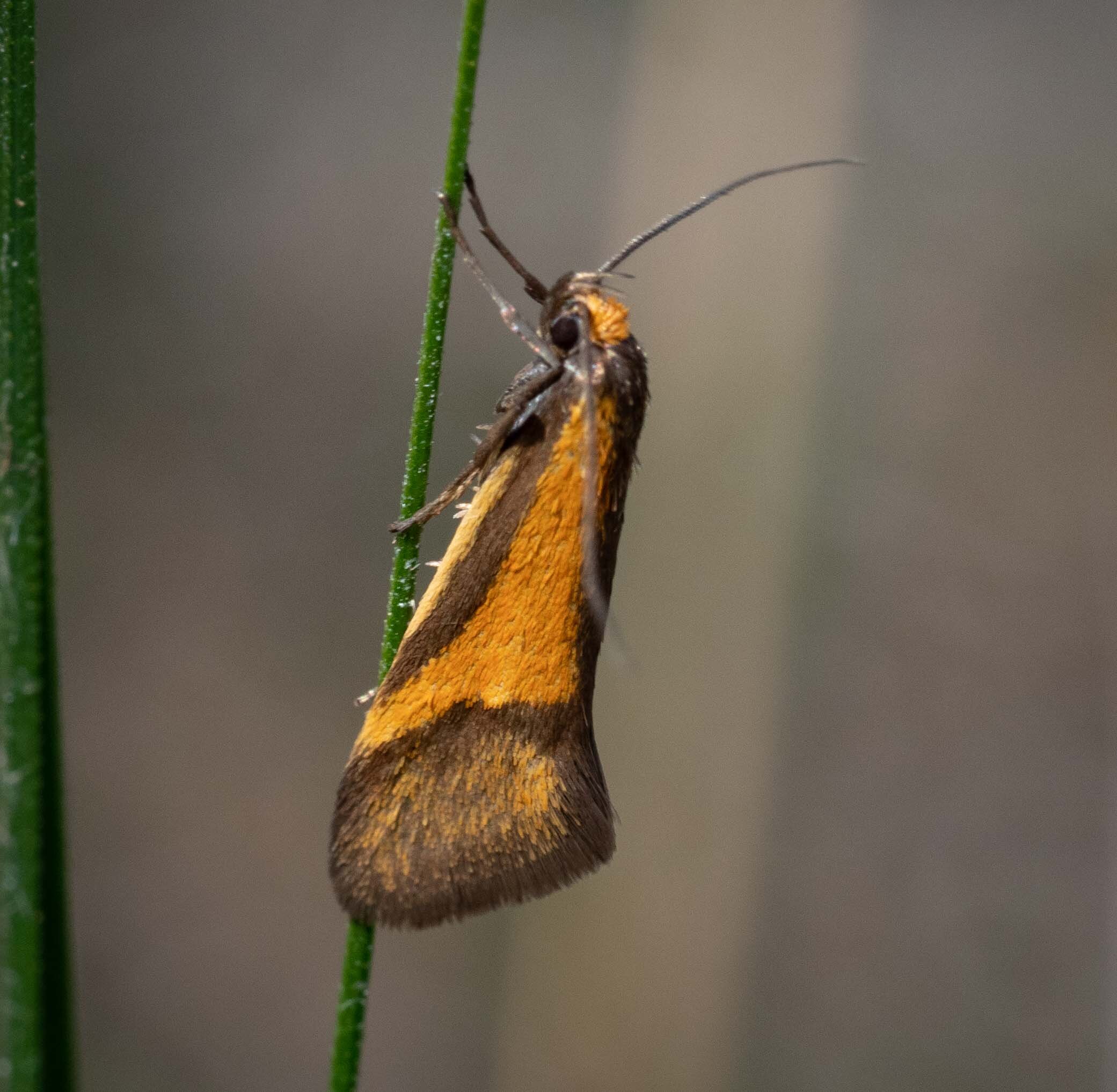
Concealer moth
Philobota arabella. We saw this species on our last visit to the helipad in October 2019.

Concealer moth
Family: Oecophoridae
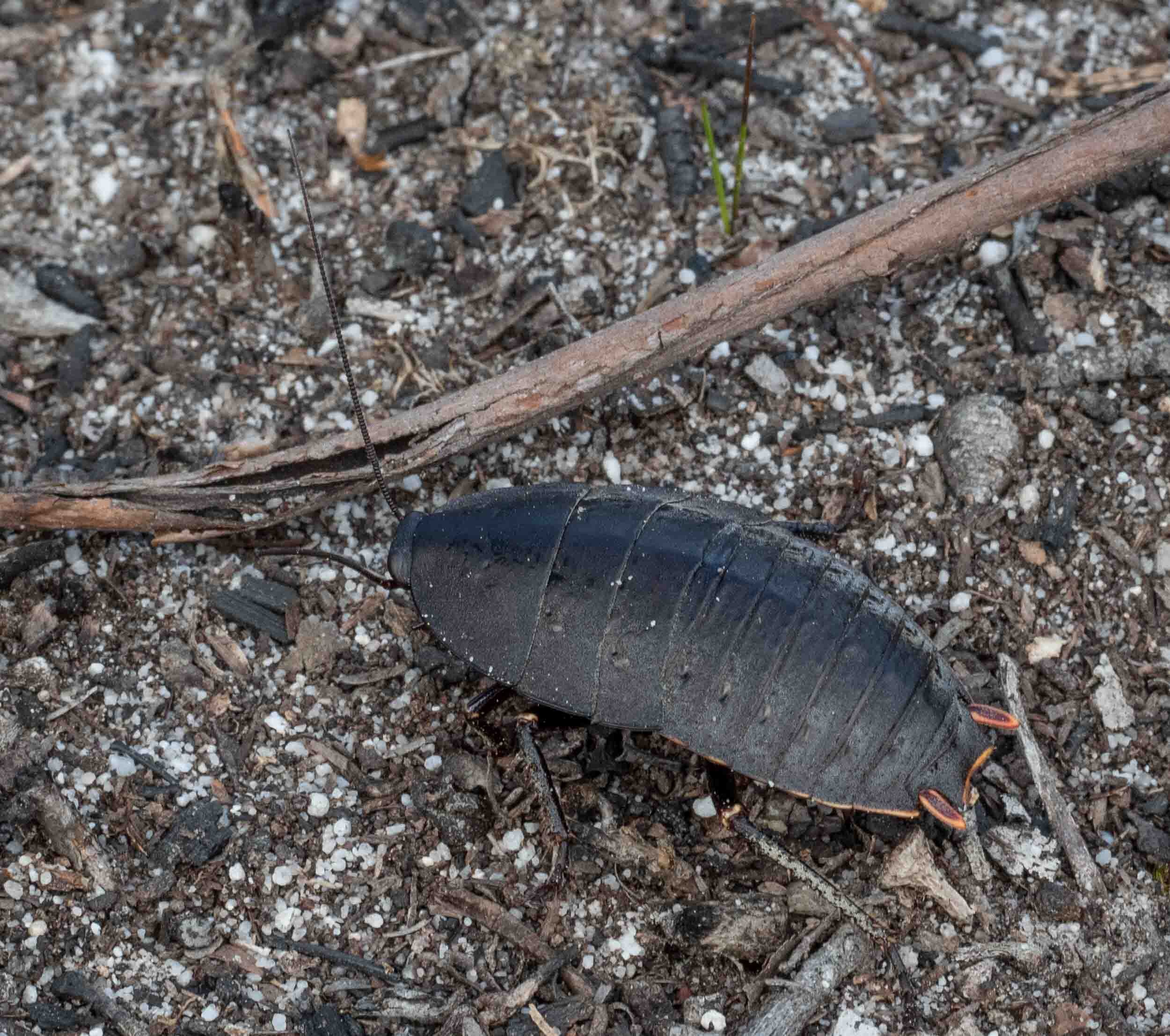
Pink-tailed Heath Cockroach
Polyzosteria aenea … a flightless, day active native cockroach that is often seen basking in the sun.

moss-loving mushrooms
Lichenomphalia chromacea … a fungus in a symbiotic relationship with moss.
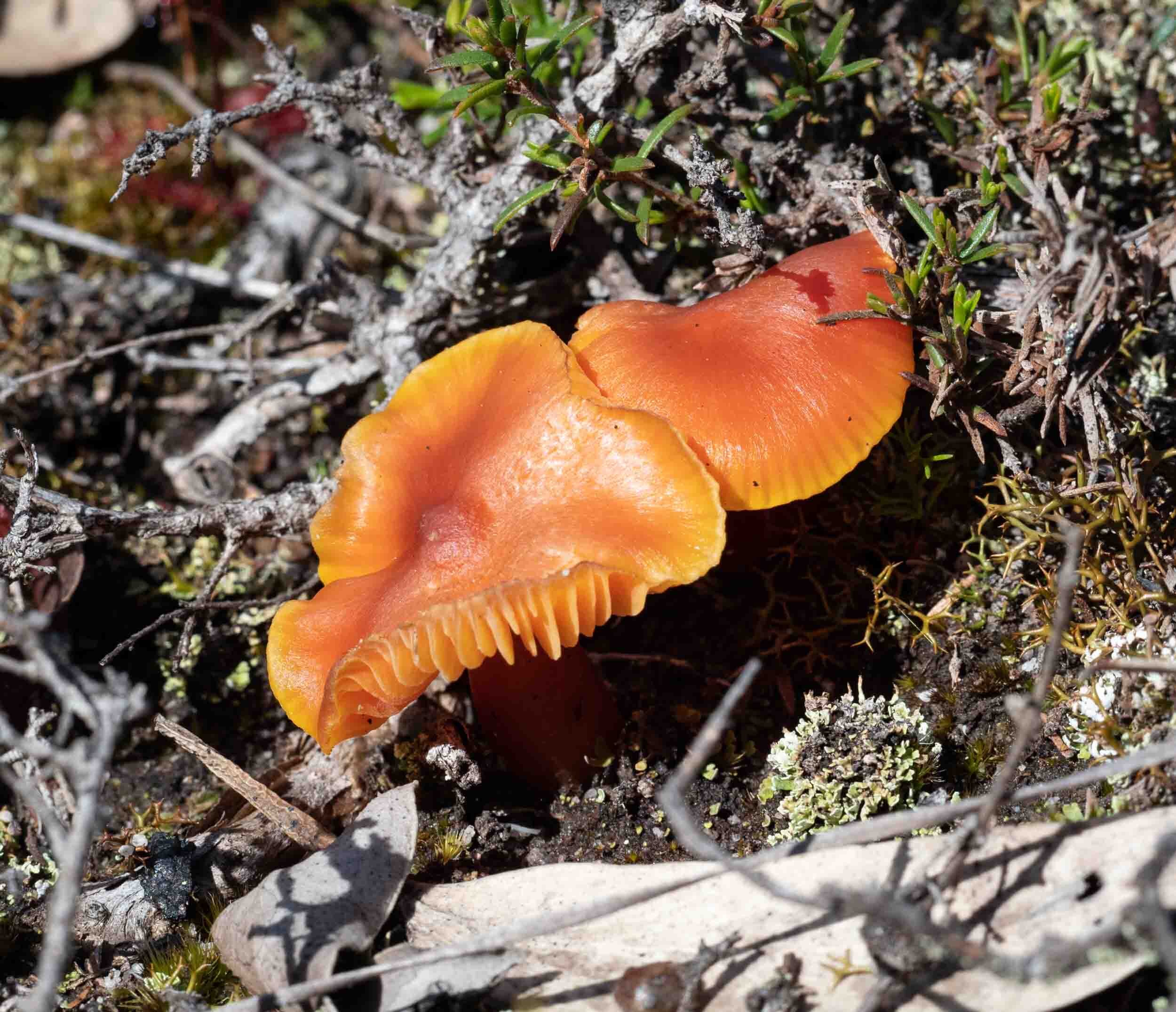
Waxcaps
Hygrocybe sp. … another group of fungi thought to grow in association with moss
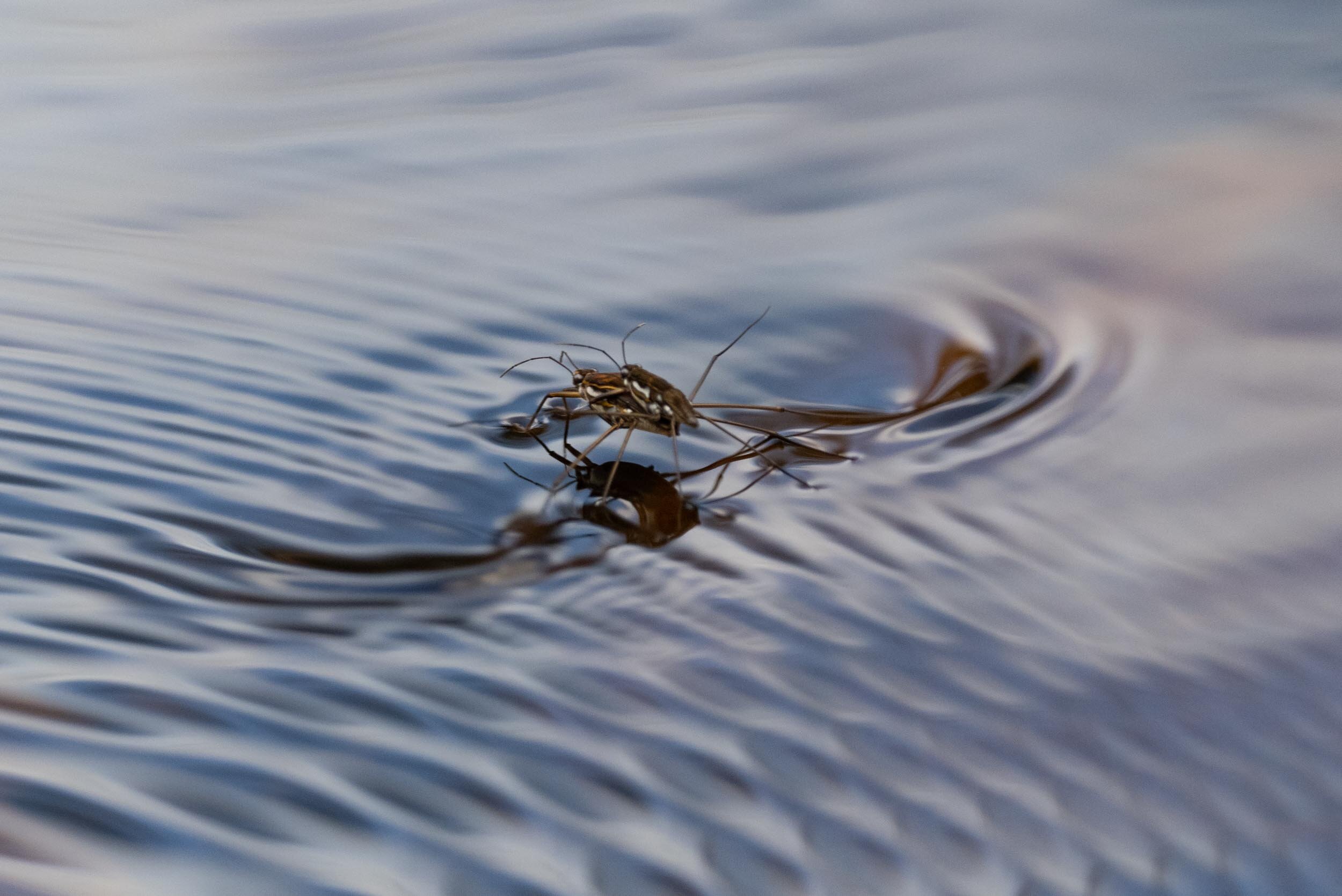
Water Striders .... the striding wave
Tenagogerris euphrosyne …. the female is the larger insect, and in control of locomotion. The cross-ripples in this image were made by other tandem pairs nearby.
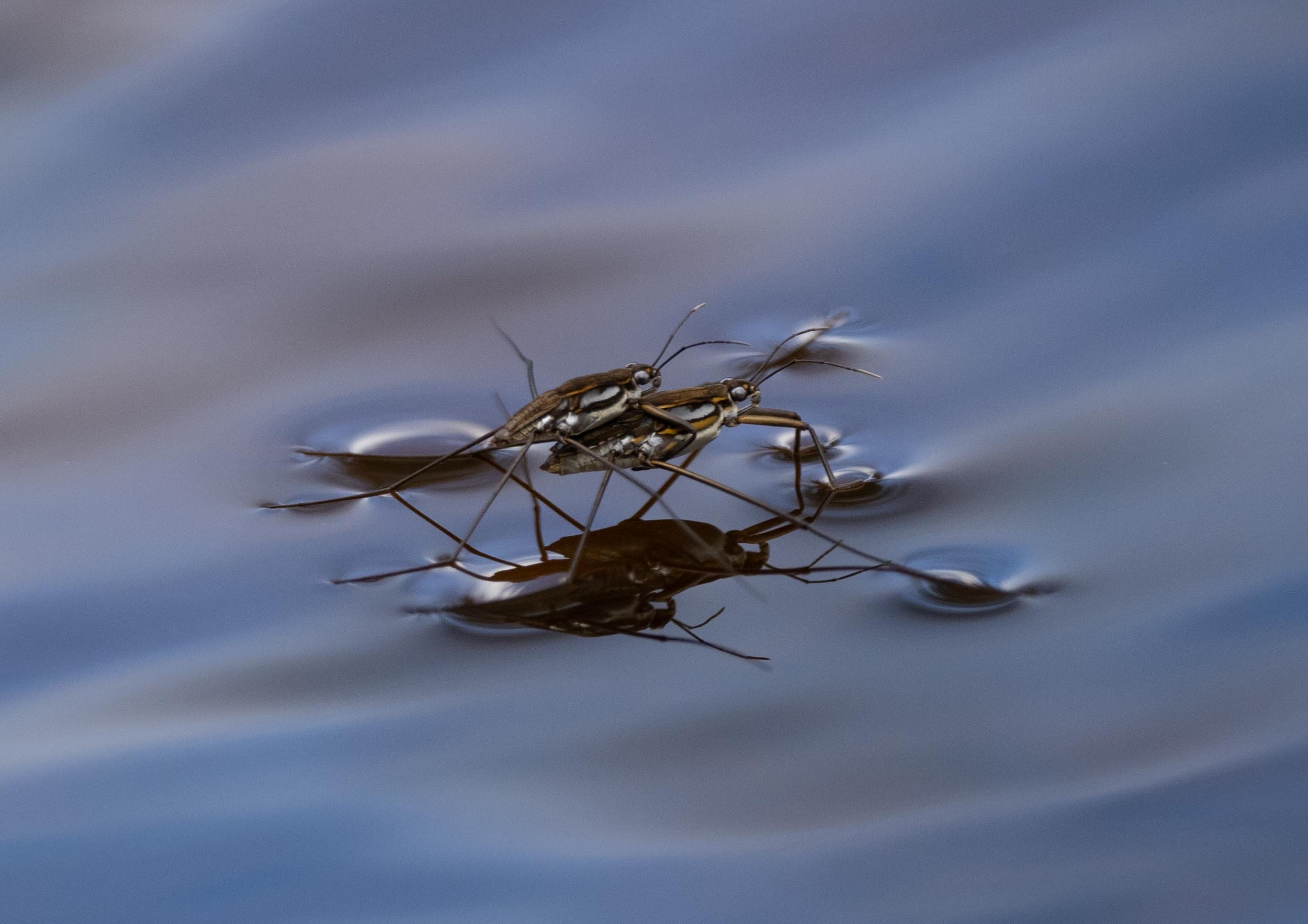
Water Striders
Tenagogerris euphrosyne
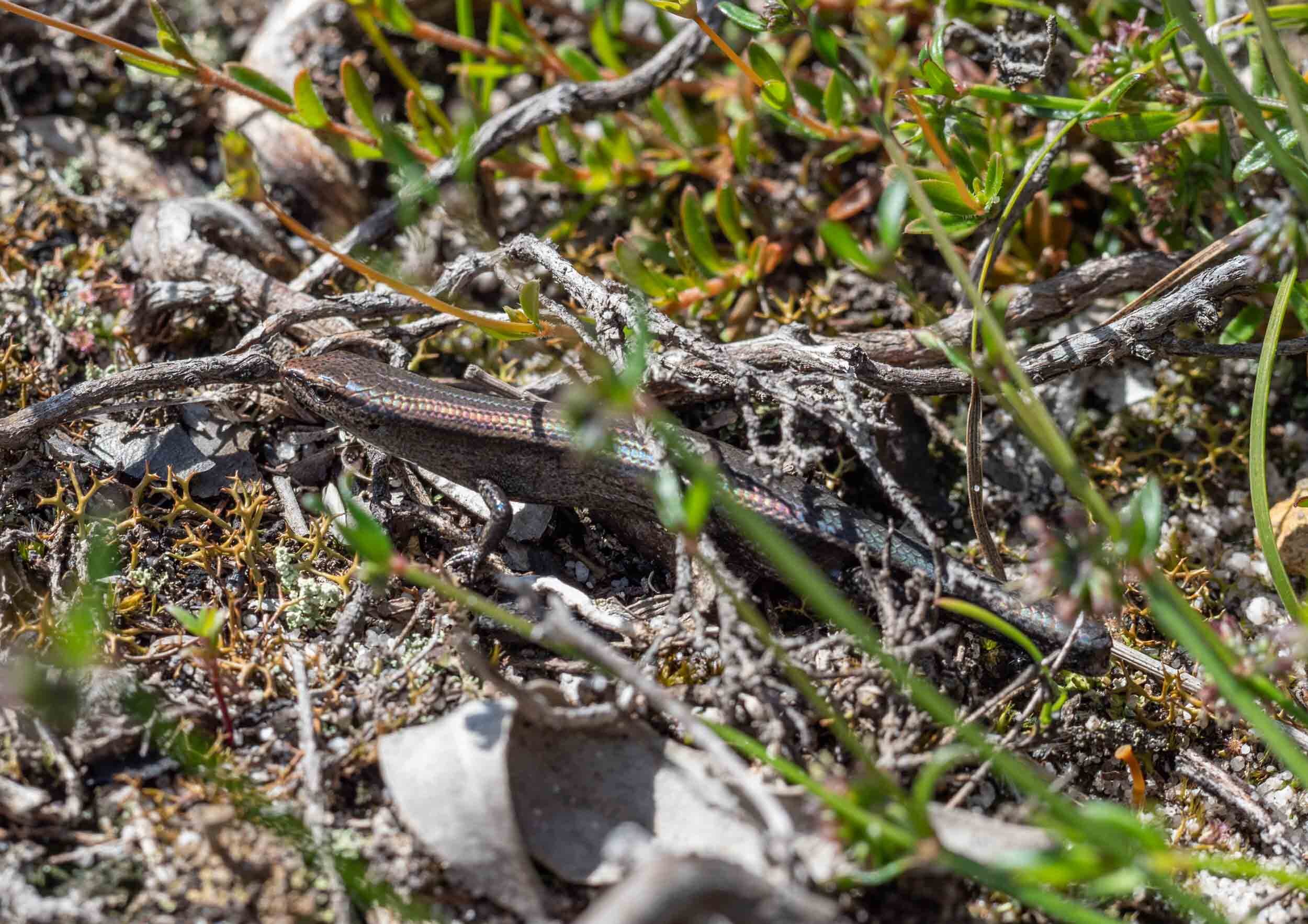
Garden Skink
Lampropholis delicata
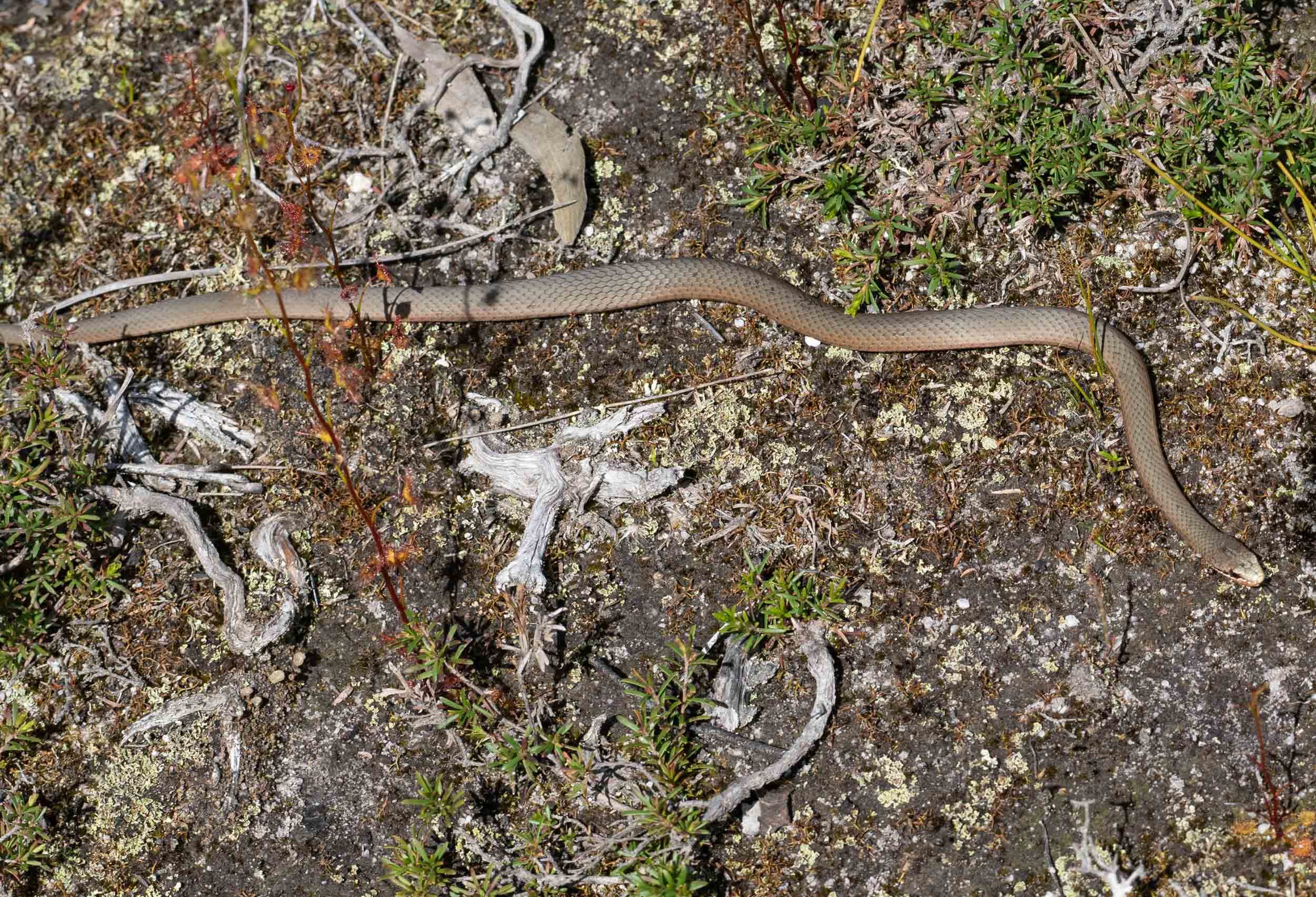
White-lipped Snake
Drysdalia coronoides
A small snake that feeds almost exclusively on skinks. Not dangerous (to humans), which is fortunate because I nearly sat on it!
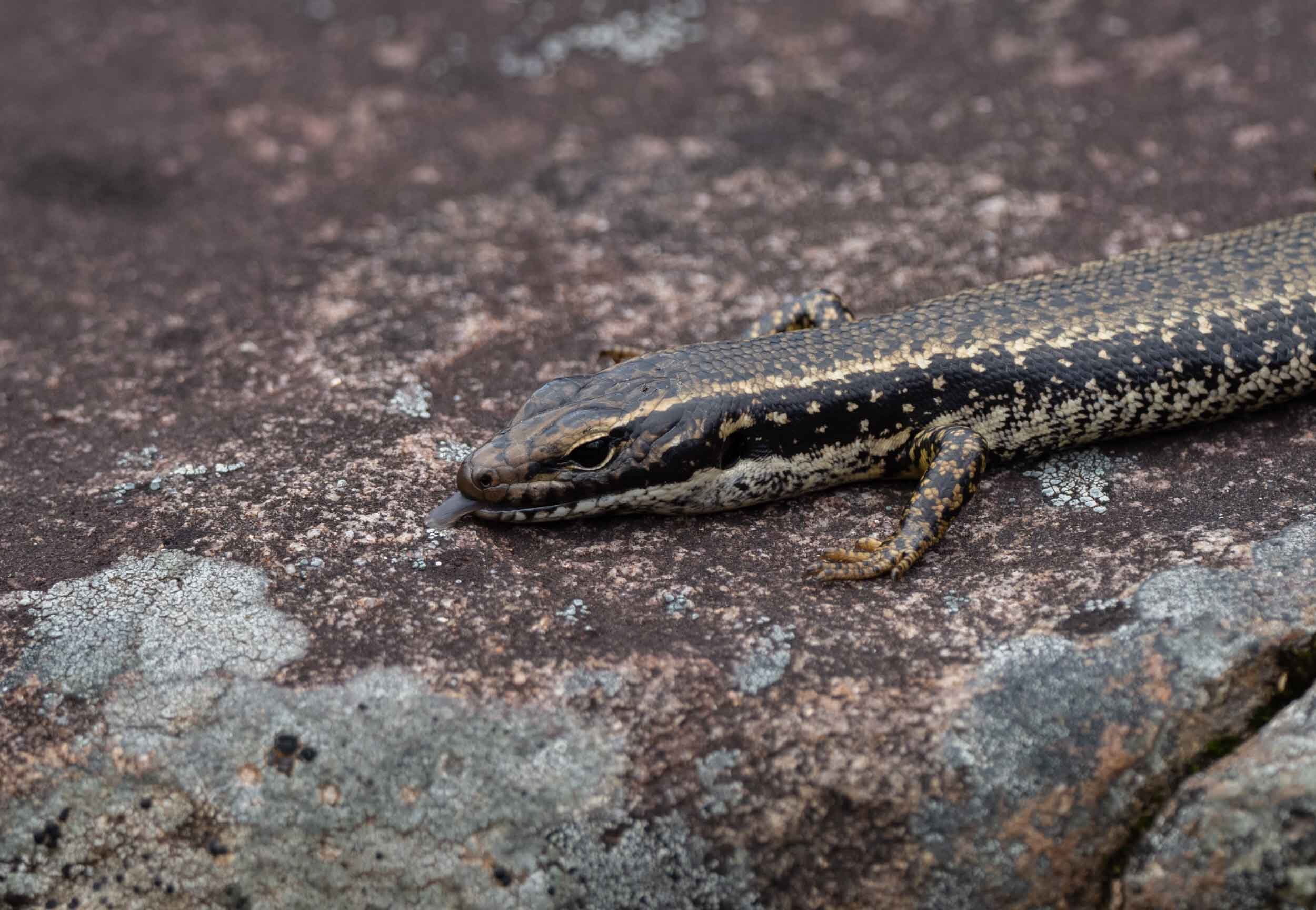
Yellow-bellied Water Skink
Eulamprus heatwolei
A common sight on the river rocks, and no doubt well-fed – every rock pool was literally teeming with tadpoles.

tiny damselfly
The only damselfly I found, and tiny. Female Ischnura aurora (Aurora Bluetail) … I think. The males are more distinctive and much more spectacular.














































